Site and plan
Angkor Wat is a unique combination of the temple mountain (the standard design for the empire's state temples) and the later plan of concentric galleries. The construction of Angkor Wat also suggests that there was a celestial significance with certain features of the temple.
This is observed in the temple's east–west orientation, and lines of sight from terraces within the temple that show specific towers to be at the precise location of the sunrise on a solstice.
The temple is a representation of Mount Meru, the home of the gods: the central quincunx of towers symbolizes the five peaks of the mountain, and the walls and moat symbolize the surrounding mountain ranges and ocean. Access to the upper areas of the temple was progressively more exclusive, with the laity being admitted only to the lowest level.
Unlike most Khmer temples, Angkor Wat is oriented to the west rather than the east. This has led many (including Maurice Glaize and George Coedès) to conclude that Suryavarman intended it to serve as his funerary temple. Further evidence for this view is provided by the bas-reliefs, which proceed in a counter-clockwise direction—prasavya in Hindu terminology—as this is the reverse of the normal order.
Rituals take place in reverse order during Brahminic funeral services. The archaeologist Charles Higham also describes a container which may have been a funerary jar which was recovered from the central tower.
It has been nominated by some as the greatest expenditure of energy on the disposal of a corpse. Freeman and Jacques, however, note that several other temples of Angkor depart from the typical eastern orientation, and suggest that Angkor Wat's alignment was due to its dedication to Vishnu, who was associated with the west.
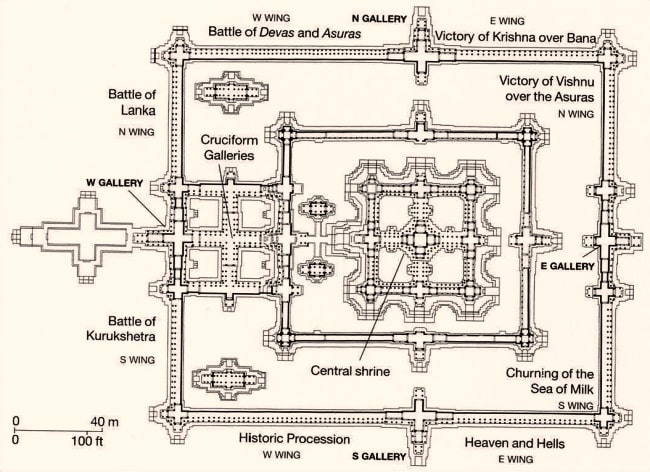
Drawing on the temple's alignment and dimensions, and on the content and arrangement of the bas-reliefs, researcher Eleanor Mannikka argues that the structure represents a claimed new era of peace under King Suryavarman II: "as the measurements of solar and lunar time cycles were built into the sacred space of Angkor Wat, this divine mandate to rule was anchored to consecrated chambers and corridors meant to perpetuate the king's power and to honour and placate the deities manifest in the heavens above."
Mannikka's suggestions have been received with a mixture of interest and scepticism in academic circles. She distances herself from the speculations of others, such as Graham Hancock, that Angkor Wat is part of a representation of the constellation Draco.
The Angkor Wat temple's main tower aligns to the morning sun of the Spring Equinox.
Style
Angkor Wat is the prime example of the classical style of Khmer architecture—the Angkor Wat style—to which it has given its name. By the 12th century Khmer architects had become skilled and confident in the use of sandstone (rather than brick or laterite) as the main building material. Most of the visible areas are of sandstone blocks, while laterite was used for the outer wall and for hidden structural parts. The binding agent used to join the blocks is yet to be identified, although natural resins or slaked lime has been suggested.
The temple has drawn praise above all for the harmony of its design. According to Maurice Glaize, a mid-20th-century conservator of Angkor, the temple "attains a classic perfection by the restrained monumentality of its finely balanced elements and the precise arrangement of its proportions. It is a work of power, unity and style."
Architecturally, the elements characteristic of the style include: the ogival, redented towers shaped like lotus buds; half-galleries to broaden passageways; axial galleries connecting enclosures; and the cruciform terraces which appear along the main axis of the temple. Typical decorative elements are devatas (or apsaras), bas-reliefs, and on pediments extensive garlands and narrative scenes.
The statuary of Angkor Wat is considered conservative, being more static and less graceful than earlier work. Other elements of the design have been destroyed by looting and the passage of time, including gilded stucco on the towers, gilding on some figures on the bas-reliefs, and wooden ceiling panels and doors.
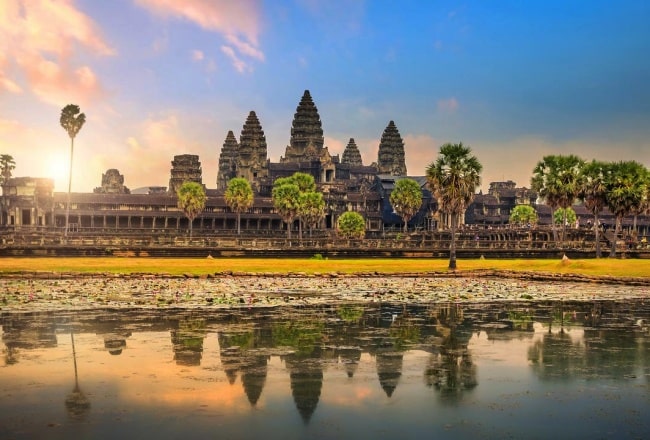
Features
Outer enclosure
The outer wall, 1,024 m (3,360 ft) by 802 m (2,631 ft) and 4.5 m (15 ft) high, is surrounded by a 30 m (98 ft) apron of open ground and a moat 190 m (620 ft) wide and over 5 kilometres (3 mi) in perimeter.
The moat extends 1.5 kilometres from east to west and 1.3 kilometres from north to south. Access to the temple is by an earth bank to the east and a sandstone causeway to the west; the latter, the main entrance, is a later addition, possibly replacing a wooden bridge.
There are gopuras at each of the cardinal points; the western is by far the largest and has three ruined towers. Glaize notes that this gopura both hides and echoes the form of the temple proper. Under the southern tower is a statue of Vishnu, known as Ta Reach, which may originally have occupied the temple's central shrine.
Galleries run between the towers and as far as two further entrances on either side of the gopura often referred to as "elephant gates", as they are large enough to admit those animals. These galleries have square pillars on the outer (west) side and a closed wall on the inner (east) side.
The ceiling between the pillars is decorated with lotus rosettes; the west face of the wall with dancing figures; and the east face of the wall with balustered windows, dancing male figures on prancing animals, and devatas, including (south of the entrance) the only one in the temple to be showing her teeth.
The outer wall encloses a space of 820,000 square metres (203 acres), which besides the temple proper was originally occupied by the city and, to the north of the temple, the royal palace. Like all secular buildings of Angkor, these were built of perishable materials rather than of stone, so nothing remains of them except the outlines of some of the streets.
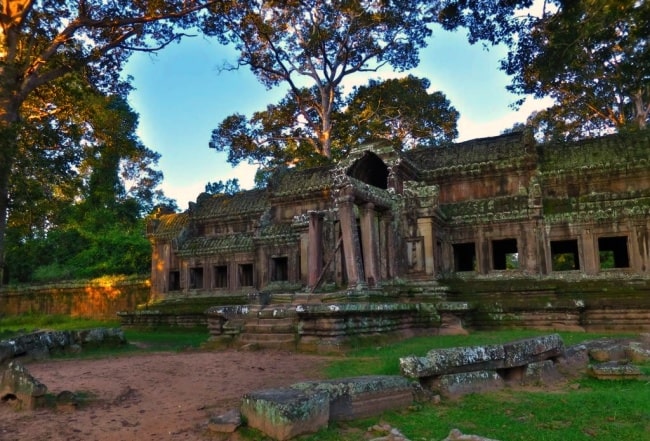
Most of the area is now covered by forest. A 350 m (1,150 ft) causeway connects the western gopura to the temple proper, with naga balustrades and six sets of steps leading down to the city on either side.
Each side also features a library with entrances at each cardinal point, in front of the third set of stairs from the entrance, and a pond between the library and the temple itself. The ponds are later additions to the design, as is the cruciform terrace guarded by lions connecting the causeway to the central structure.
Central structure
The temple stands on a terrace raised higher than the city. It is made of three rectangular galleries rising to a central tower, each level higher than the last. Mannikka interprets these galleries as being dedicated to the king, Brahma, the moon, and Vishnu.
Each gallery has a gopura at each of the points, and the two inner galleries each have towers at their corners, forming a quincunx with the central tower. Because the temple faces west, the features are all set back towards the east, leaving more space to be filled in each enclosure and gallery on the west side; for the same reason the west-facing steps are shallower than those on the other sides.
The outer gallery measures 187 m (614 ft) by 215 m (705 ft), with pavilions rather than towers at the corners. The gallery is open to the outside of the temple, with columned half-galleries extending and buttressing the structure.
Connecting the outer gallery to the second enclosure on the west side is a cruciform cloister called Preah Poan (the "Hall of a Thousand Gods"). Buddha images were left in the cloister by pilgrims over the centuries, although most have now been removed.
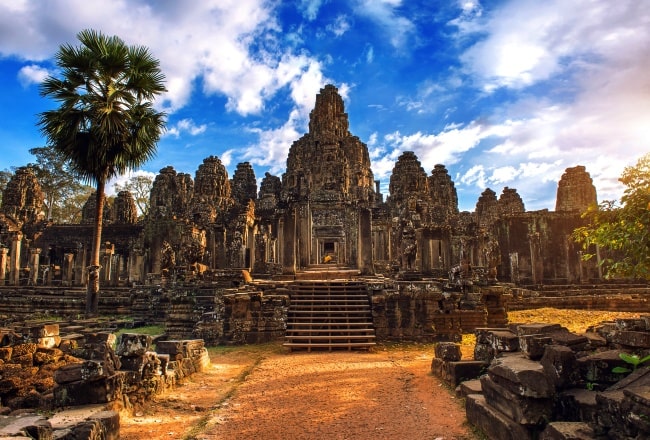
This area has many inscriptions relating the good deeds of pilgrims, most written in Khmer but others in Burmese and Japanese. The four small courtyards marked out by the cloister may originally have been filled with water. North and south of the cloister are libraries.
Beyond, the second and inner galleries are connected to each other and to two flanking libraries by another cruciform terrace, again a later addition. From the second level upwards, devatas abound on the walls, singly or in groups of up to four.
The second-level enclosure is 100 m (330 ft) by 115 m (377 ft), and may originally have been flooded to represent the ocean around Mount Meru. Three sets of steps on each side lead up to the corner towers and gopuras of the inner gallery. The very steep stairways represent the difficulty of ascending to the kingdom of the gods.
This inner gallery, called the Bakan, is a 60 m (200 ft) square with axial galleries connecting each gopura with the central shrine, and subsidiary shrines located below the corner towers. The roofings of the galleries are decorated with the motif of the body of a snake ending in the heads of lions or garudas.
Carved lintels and pediments decorate the entrances to the galleries and to the shrines. The tower above the central shrine rises 43 m (141 ft) to a height of 65 m (213 ft) above the ground; unlike those of previous temple mountains, the central tower is raised above the surrounding four.
The shrine itself, originally occupied by a statue of Vishnu and open on each side, was walled in when the temple was converted to Theravada Buddhism, the new walls featuring standing Buddhas.
In 1934, the conservator George Trouvé excavated the pit beneath the central shrine: filled with sand and water it had already been robbed of its treasure, but he did find a sacred foundation deposit of gold leaf two metres above ground level.
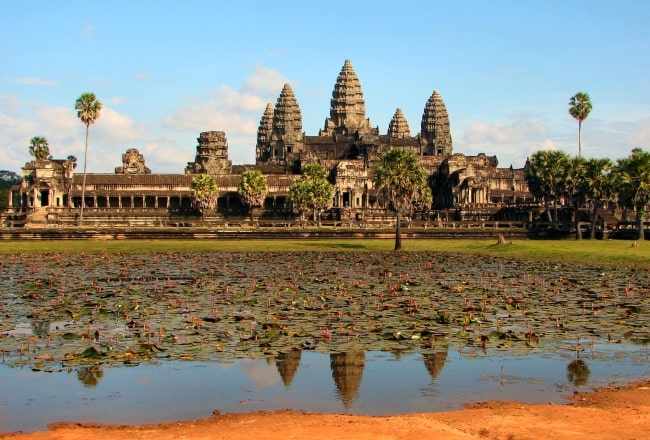
Decoration
Integrated with the architecture of the building, and one of the causes for its fame is Angkor Wat's extensive decoration, which predominantly takes the form of bas-relief friezes. The inner walls of the outer gallery bear a series of large-scale scenes mainly depicting episodes from the Hindu epics the Ramayana and the Mahabharata.
Higham has called these, "the greatest known linear arrangement of stone carving". From the north-west corner anti-clockwise, the western gallery shows the Battle of Lanka (from the Ramayana, in which Rama defeats Ravana) and the Battle of Kurukshetra (from the Mahabharata, showing the mutual annihilation of the Kaurava and Pandava clans).
On the southern gallery follow the only historical scene, a procession of Suryavarman II, then the 32 hells and 37 heavens of Hinduism.
On the eastern gallery is one of the most celebrated scenes, the Churning of the Sea of Milk, showing 92 asuras and 88 devas using the serpent Vasuki to churn the sea under Vishnu's direction (Mannikka counts only 91 asuras, and explains the asymmetrical numbers as representing the number of days from the winter solstice to the spring equinox, and from the equinox to the summer solstice).
It is followed by Vishnu defeating asuras (a 16th-century addition). The northern gallery shows Krishna's victory over Bana (where according to Glaize, "The workmanship is at its worst").
Angkor Wat is decorated with depictions of apsaras and devata; there are more than 1,796 depictions of devata in the present research inventory. Angkor Wat architects employed small apsara images (30 cm (12 in)–40 cm (16 in)) as decorative motifs on pillars and walls.
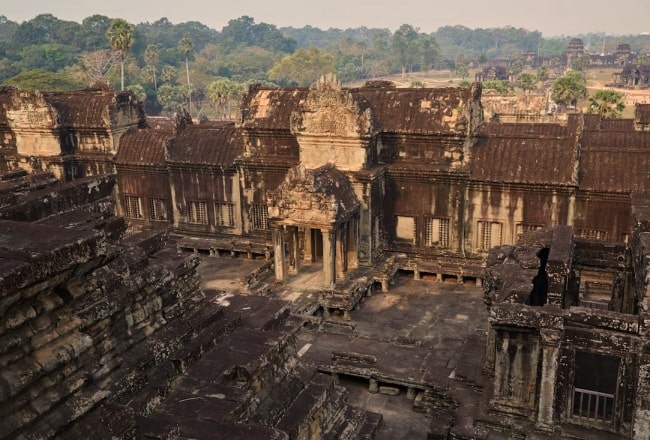
They incorporated larger devata images (all full-body portraits measuring approximately 95 cm (37 in)–110 cm (43 in)) more prominently at every level of the temple from the entry pavilion to the tops of the high towers. In 1927, Sappho Marchal published a study cataloging the remarkable diversity of their hair, headdresses, garments, stance, jewellery and decorative flowers, which Marchal concluded were based on actual practices of the Angkor period.
Construction techniques
The stones, as smooth as polished marble, were laid without mortar with very tight joints that are sometimes hard to find. The blocks were held together by mortise and tenon joints in some cases, while in others they used dovetails and gravity.
The blocks were presumably put in place by a combination of elephants, coir ropes, pulleys and bamboo scaffolding. Henri Mouhot noted that most of the blocks had holes 2.5 cm (0.98 in) in diameter and 3 cm (1.2 in) deep, with more holes on the larger blocks.
Some scholars have suggested that these were used to join them together with iron rods, but others claim they were used to hold temporary pegs to help manoeuvre them into place.
The monument was made out of 5 to 10 million sandstone blocks with a maximum weight of 1.5 tons each. In fact, the entire city of Angkor used up far greater amounts of stone than all the Egyptian pyramids combined, and occupied an area significantly greater than modern-day Paris.
Moreover, unlike the Egyptian pyramids which use limestone quarried barely 0.5 km (0.31 mi) away all the time, the entire city of Angkor was built with sandstone quarried 40 km (25 mi) (or more) away.
This sandstone had to be transported from Mount Kulen, a quarry approximately 25 miles (40 km) to the northeast. The route has been suggested to span 35 kilometres (22 mi) along a canal towards Tonlé Sap lake, another 35 kilometres (22 mi) crossing the lake, and finally 15 kilometres (9.3 mi) against the current along Siem Reap River, making a total journey of 90 kilometres (56 mi).
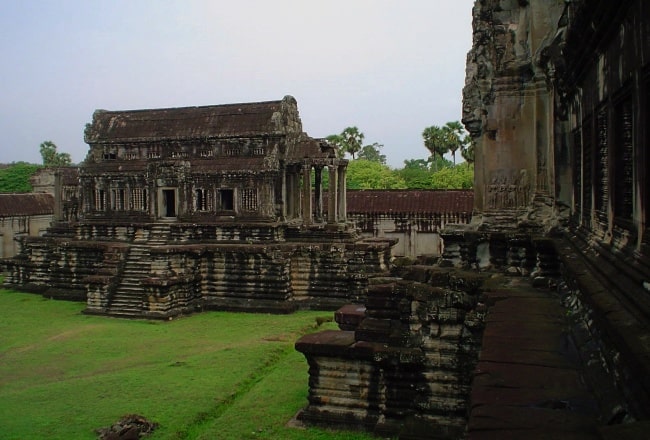
However, Etsuo Uchida and Ichita Shimoda of Waseda University in Tokyo, Japan have discovered in 2011 a shorter 35-kilometre (22 mi) canal connecting Mount Kulen and Angkor Wat using satellite imagery. The two believe that the Khmer used this route instead.
Virtually all of its surfaces, columns, lintels and even roofs are carved. There are miles of reliefs illustrating scenes from Indian literature including unicorns, griffins, winged dragons pulling chariots as well as warriors following an elephant-mounted leader and celestial dancing girls with elaborate hair styles.
The gallery wall alone is decorated with almost 1,000 square metres of bas reliefs. Holes on some of the Angkor walls indicate that they may have been decorated with bronze sheets. These were highly prized in ancient times and were a prime target for robbers.
While excavating Khajuraho, Alex Evans, a stonemason and sculptor, recreated a stone sculpture under 4 feet (1.2 m), this took about 60 days to carve. Roger Hopkins and Mark Lehner also conducted experiments to quarry limestone which took 12 quarrymen 22 days to quarry about 400 tons of stone.
The labour force to quarry, transport, carve and install so much sandstone must have run into the thousands including many highly skilled artisans. The skills required to carve these sculptures were developed hundreds of years earlier, as demonstrated by some artefacts that have been dated to the seventh century, before the Khmer came to power.
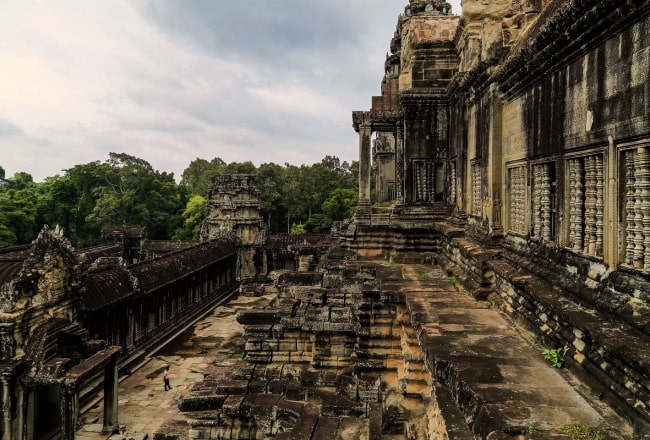
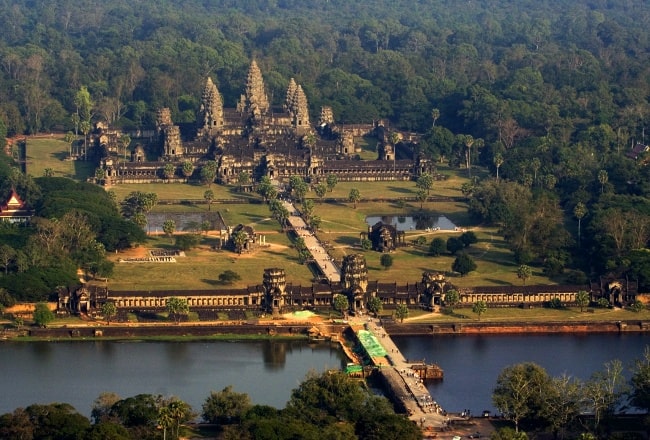


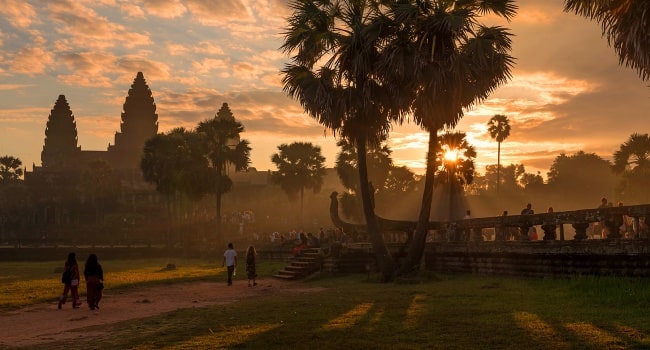

 17/04/2024
17/04/2024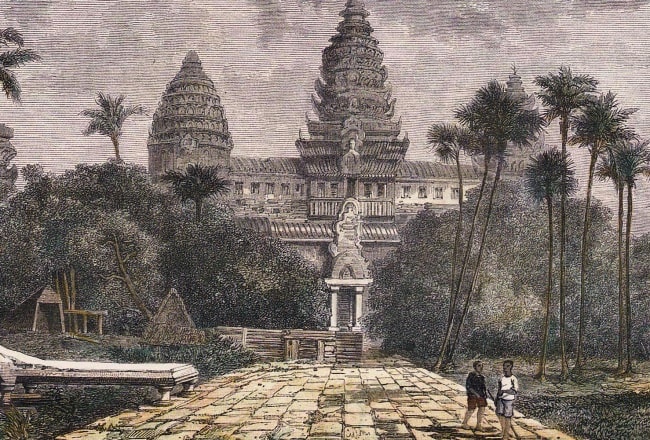
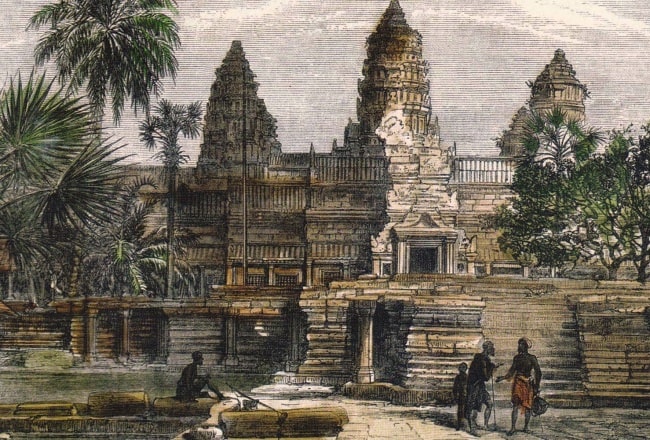
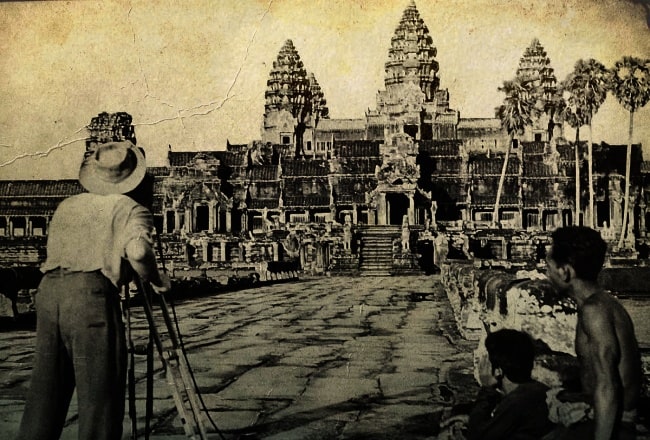
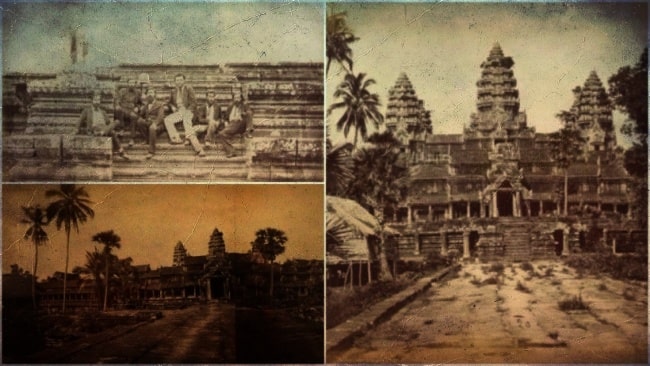
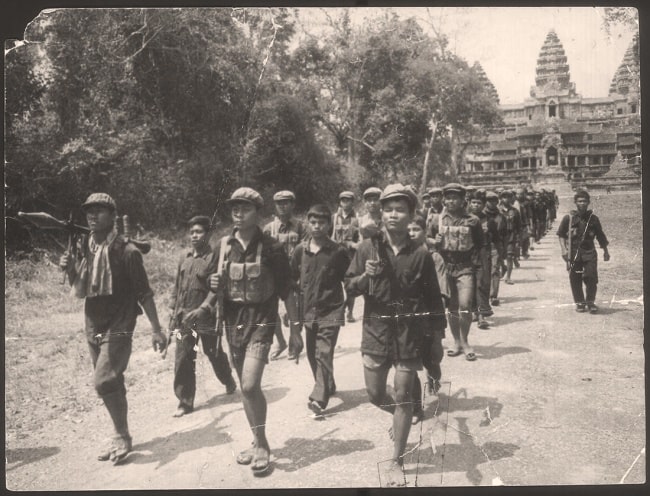
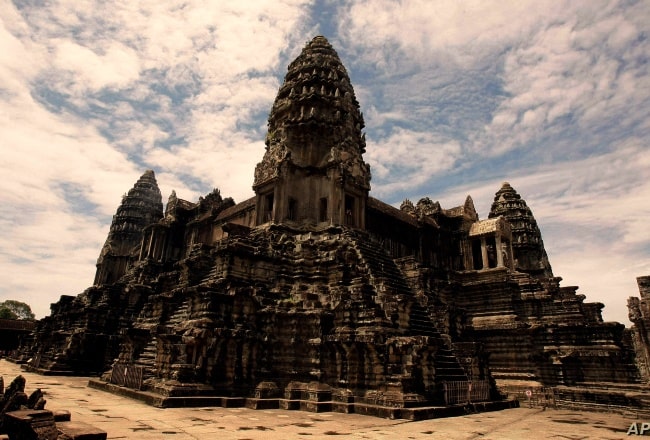







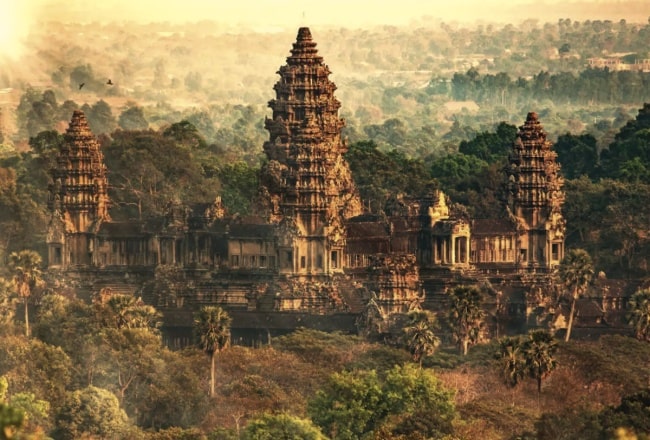
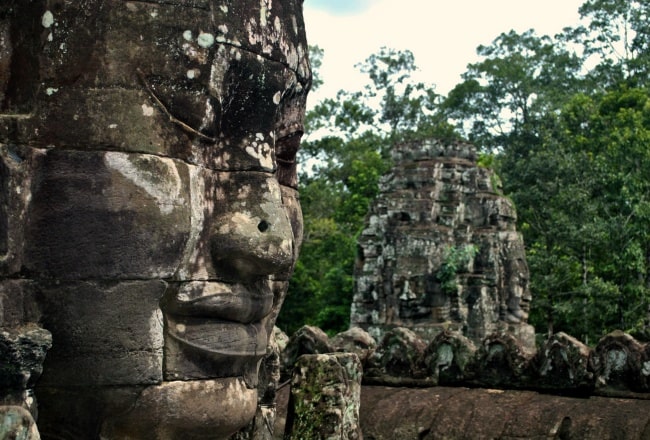
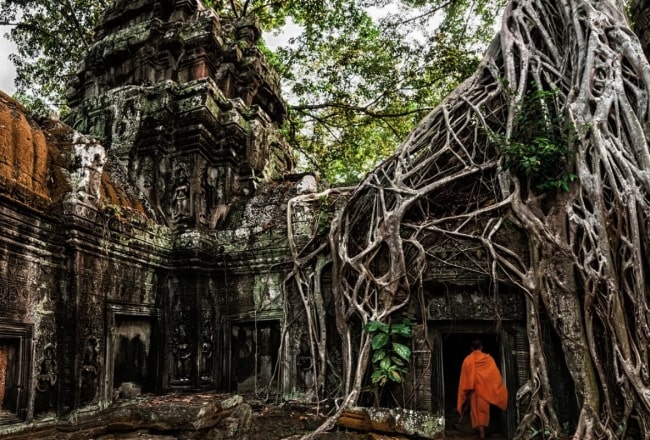
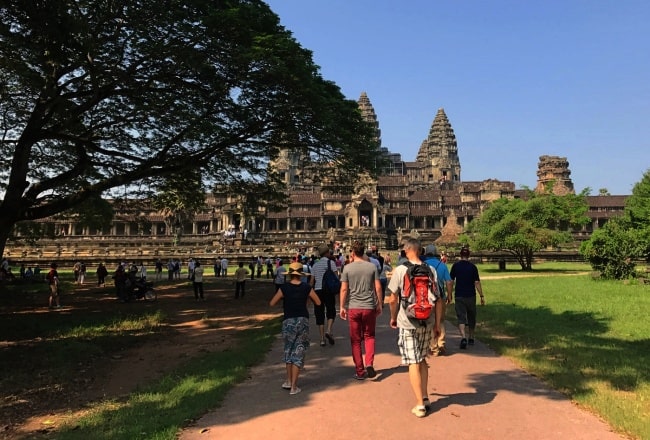
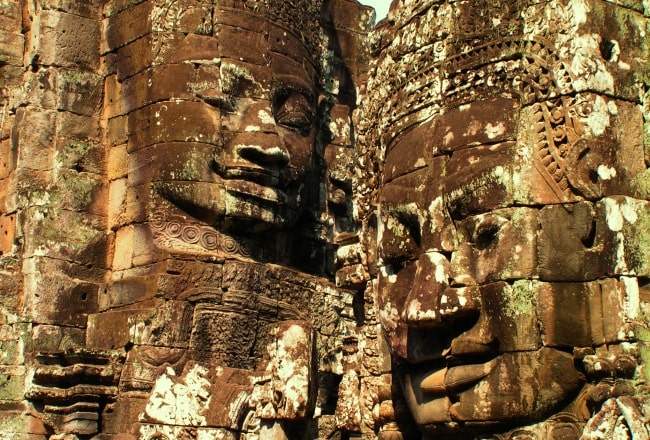
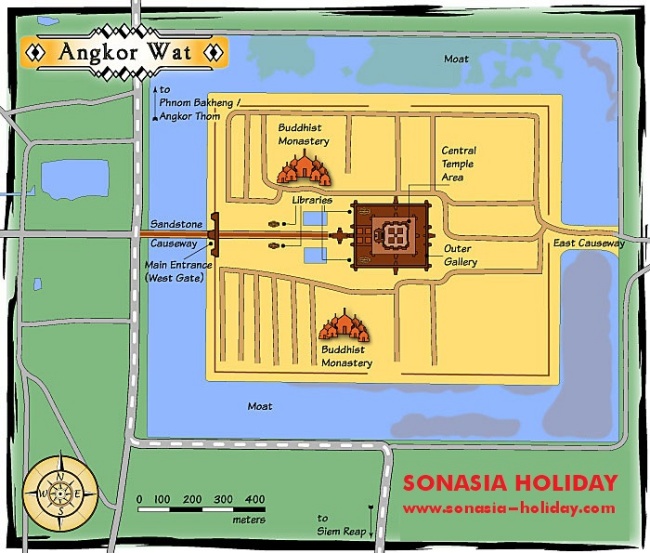
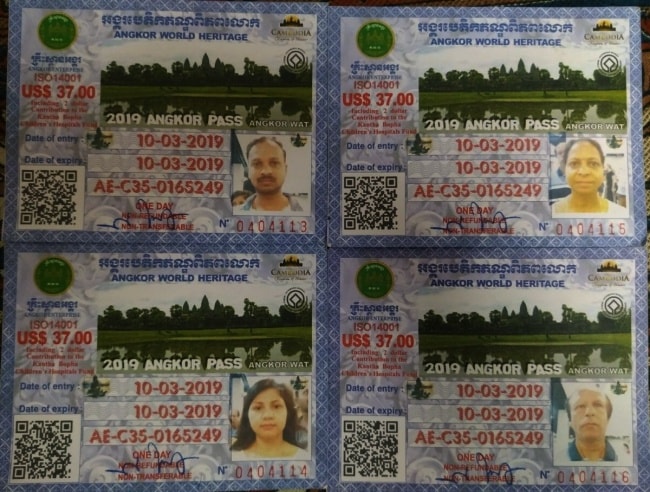
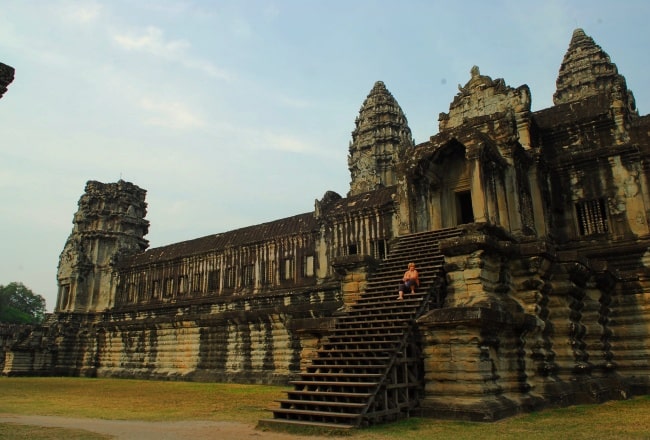

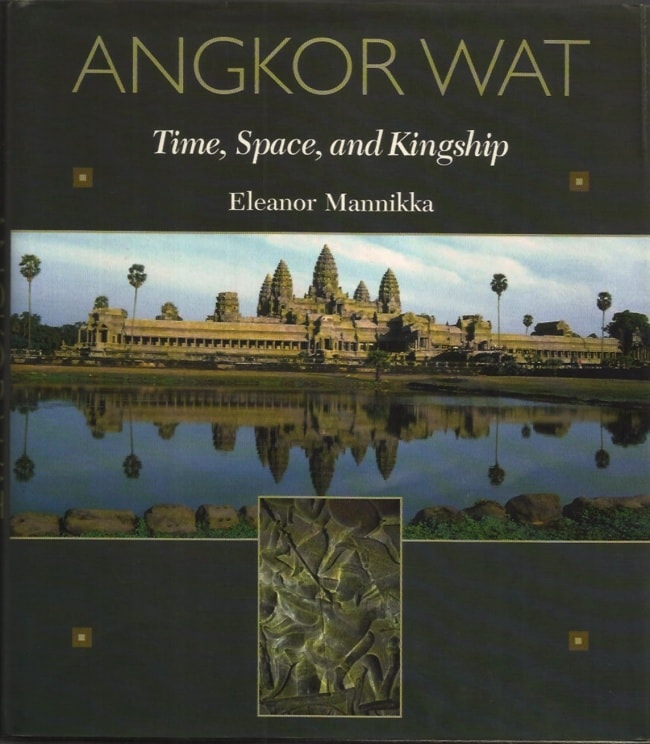
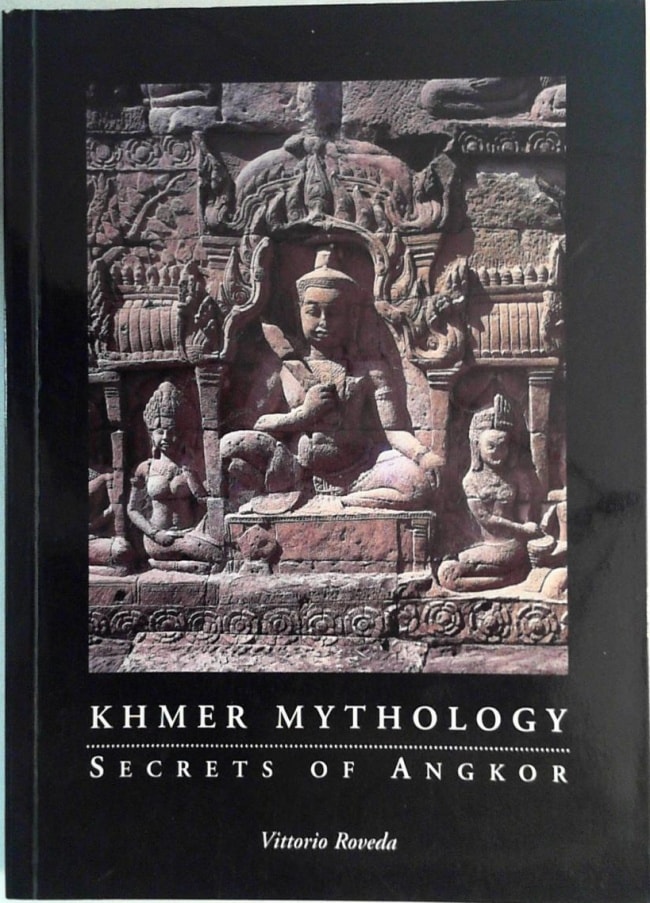
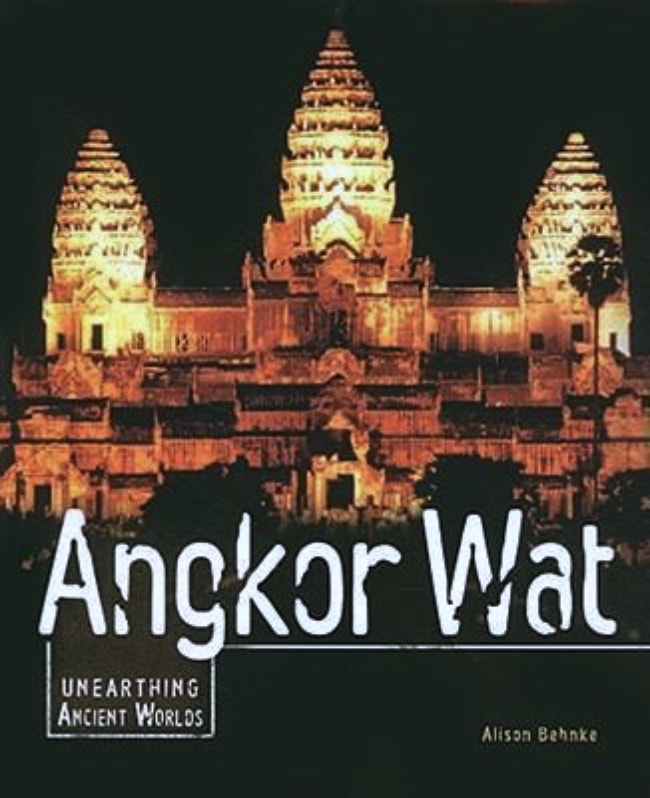
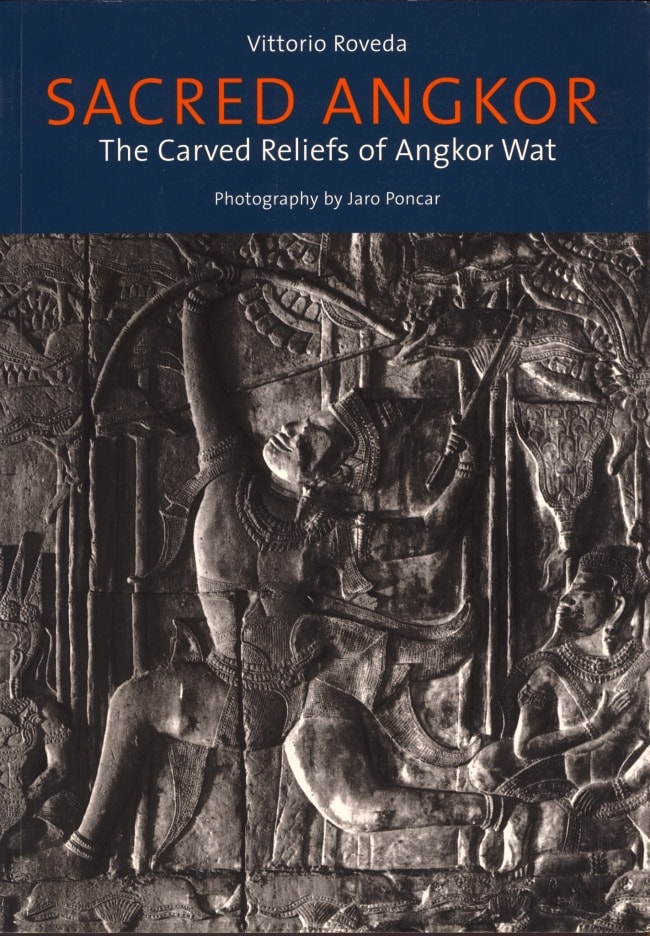
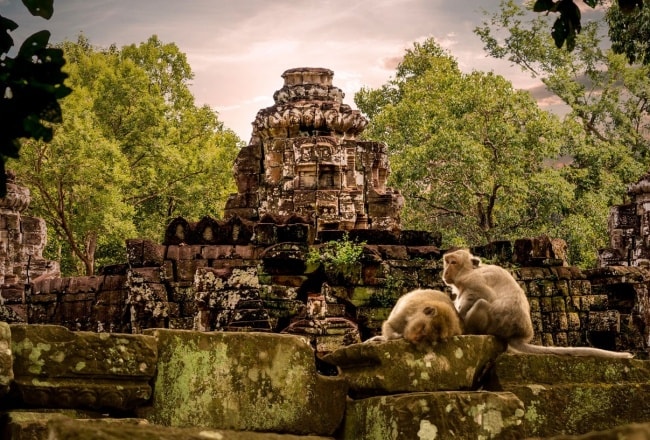
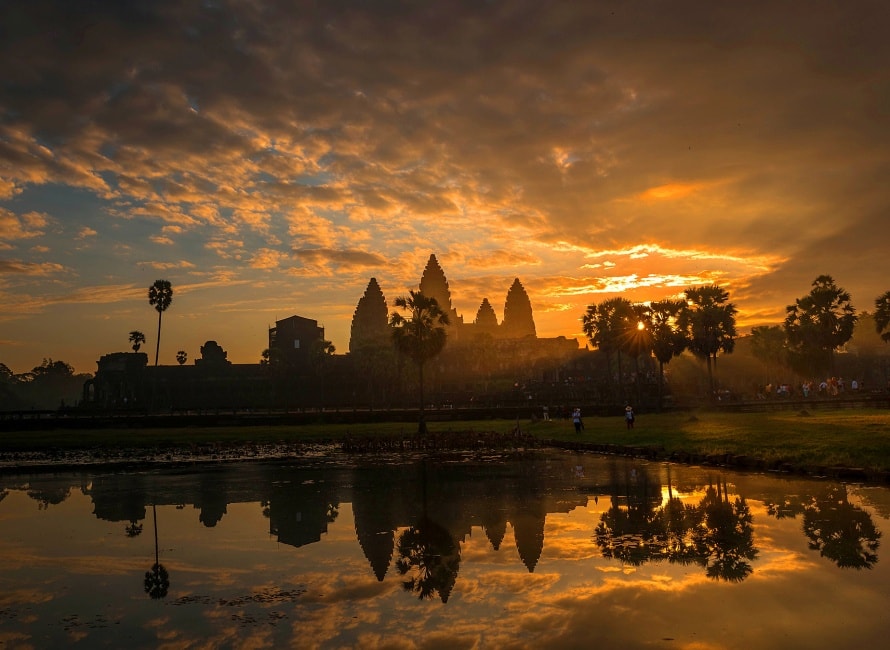
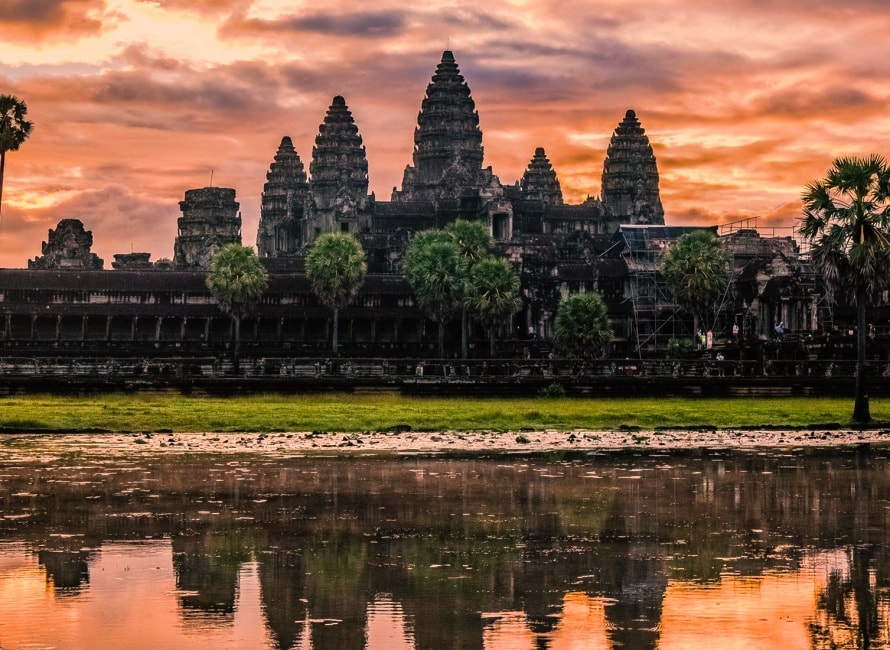
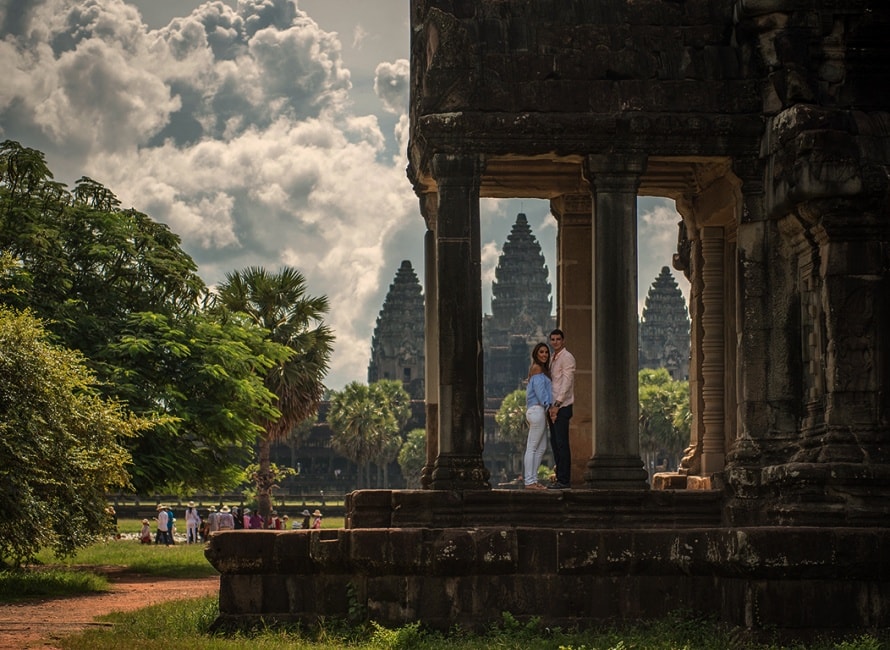
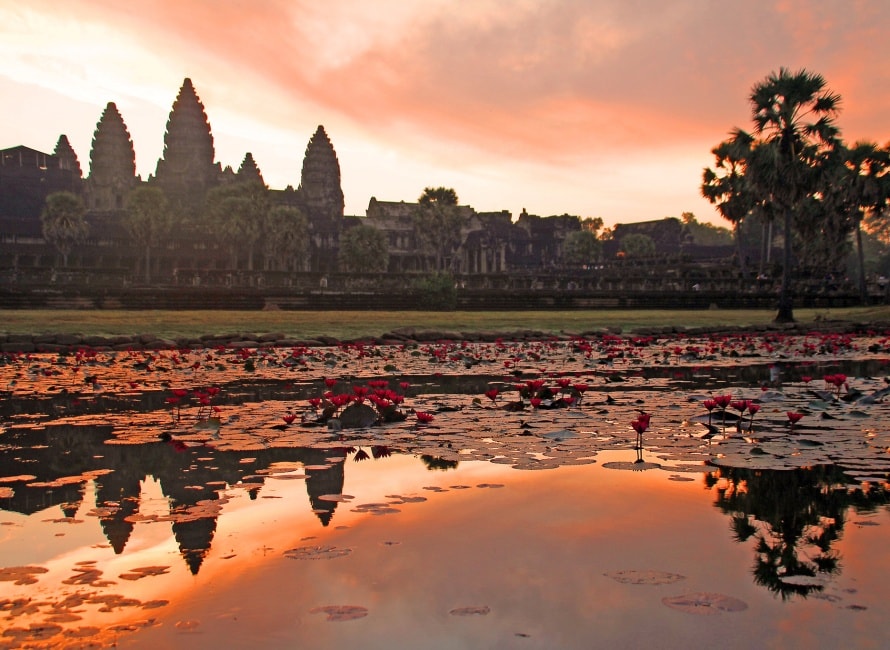
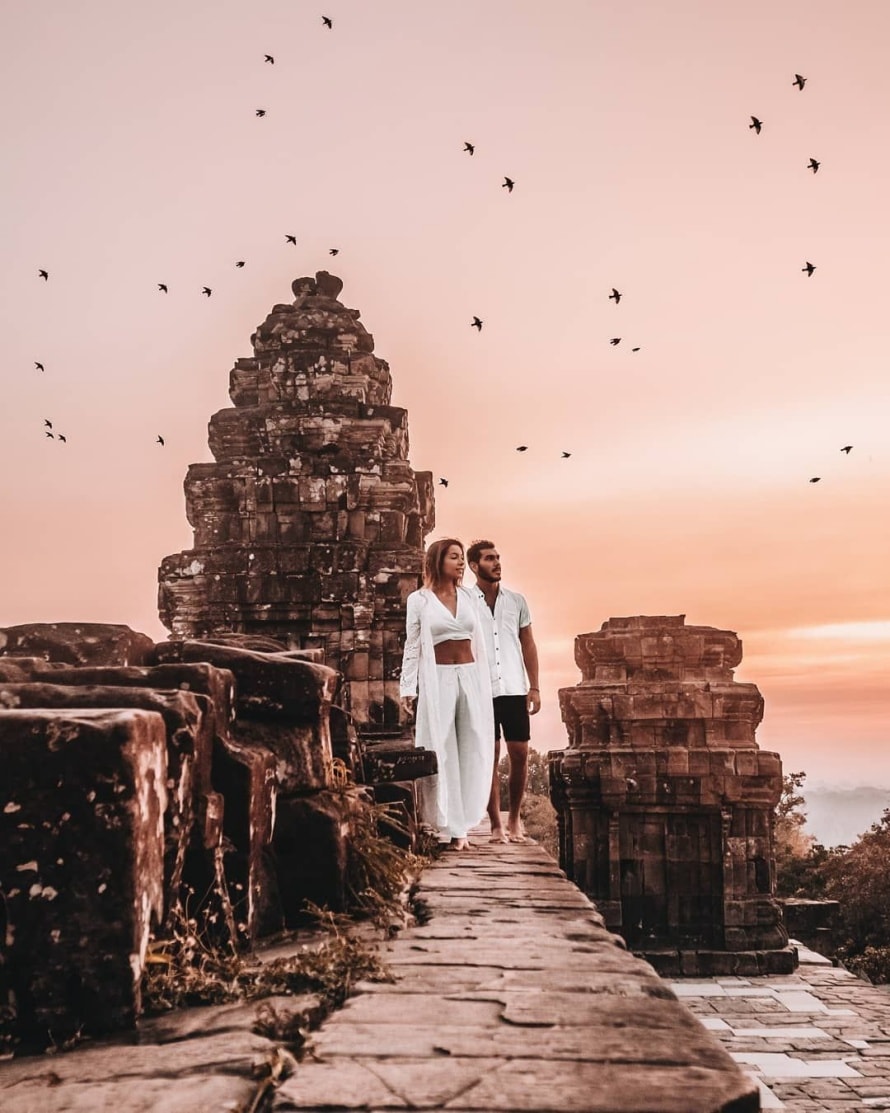
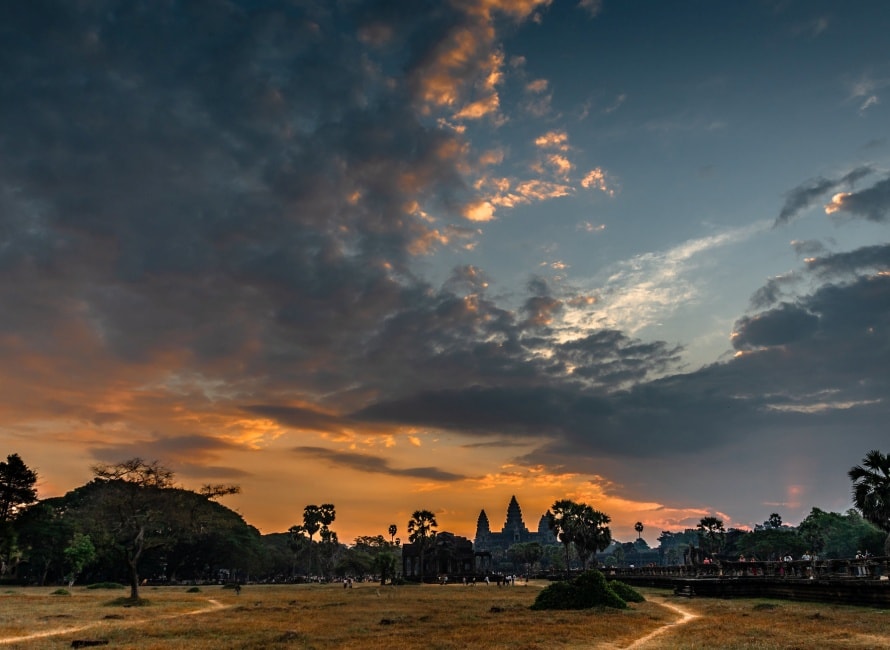
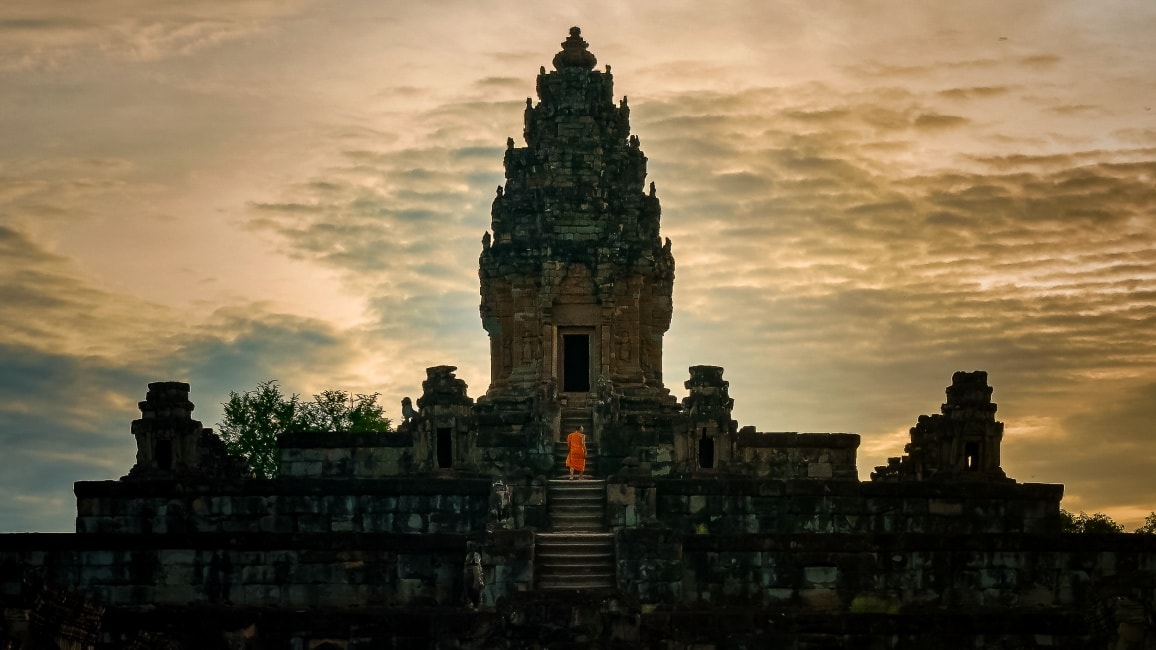
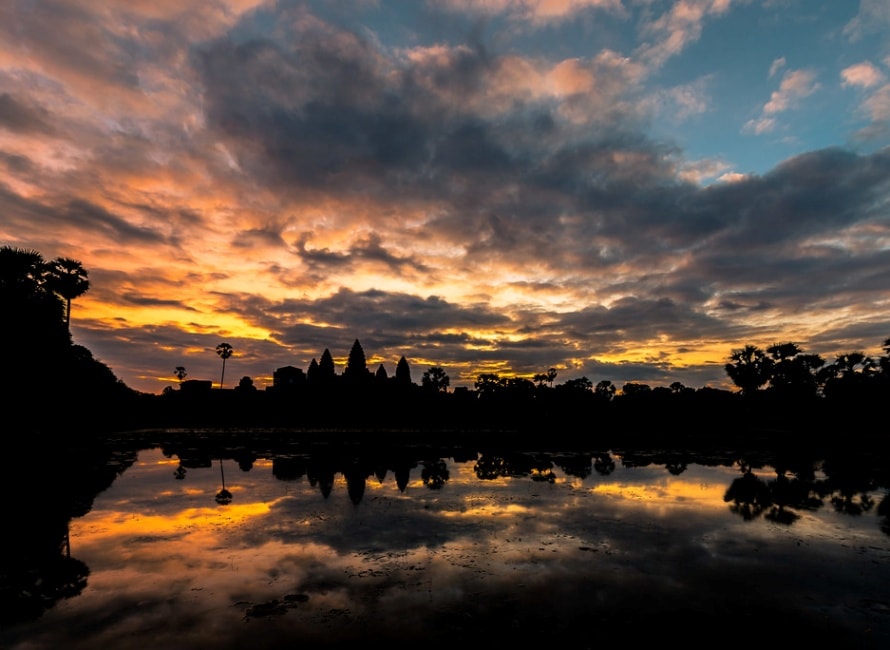
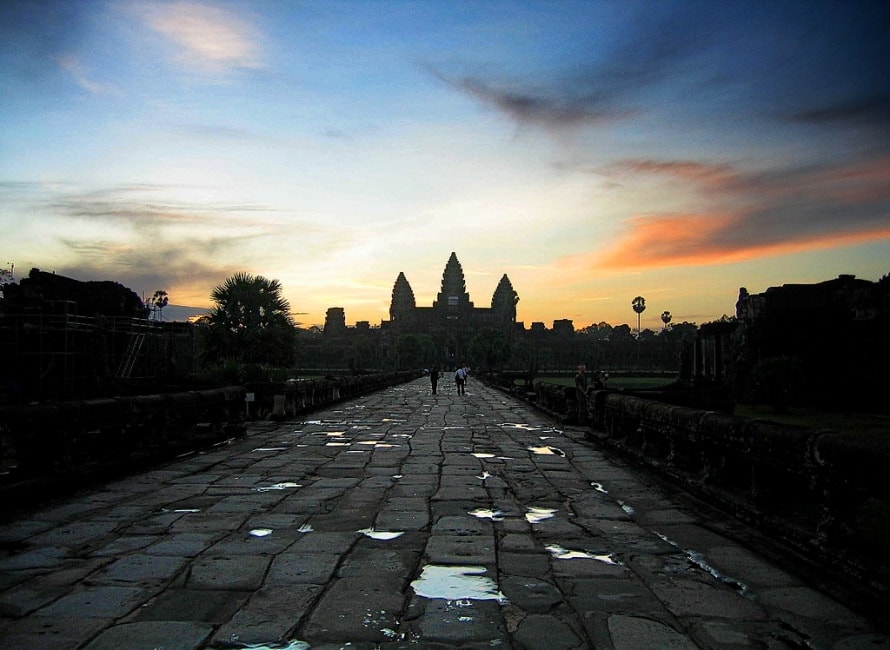

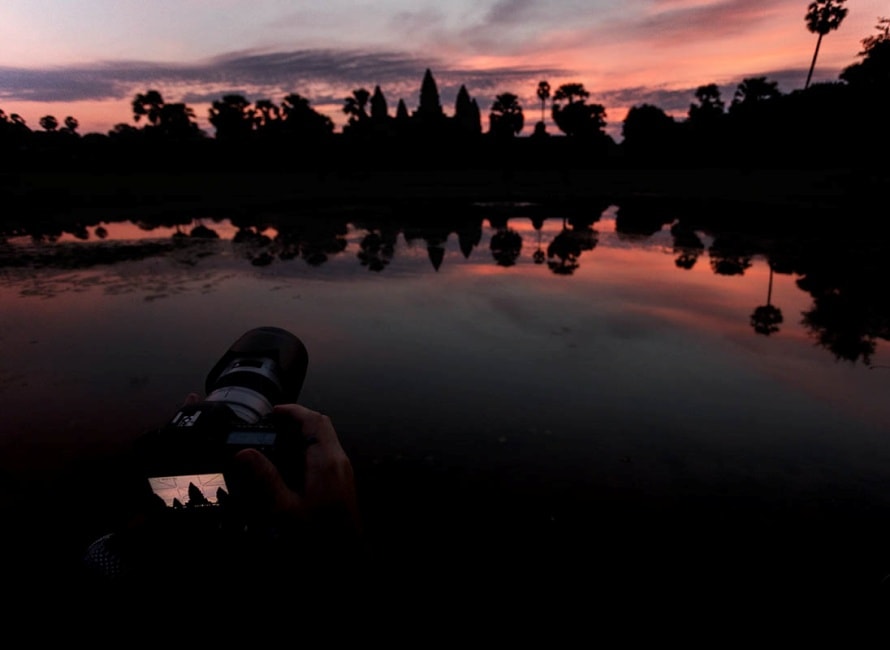
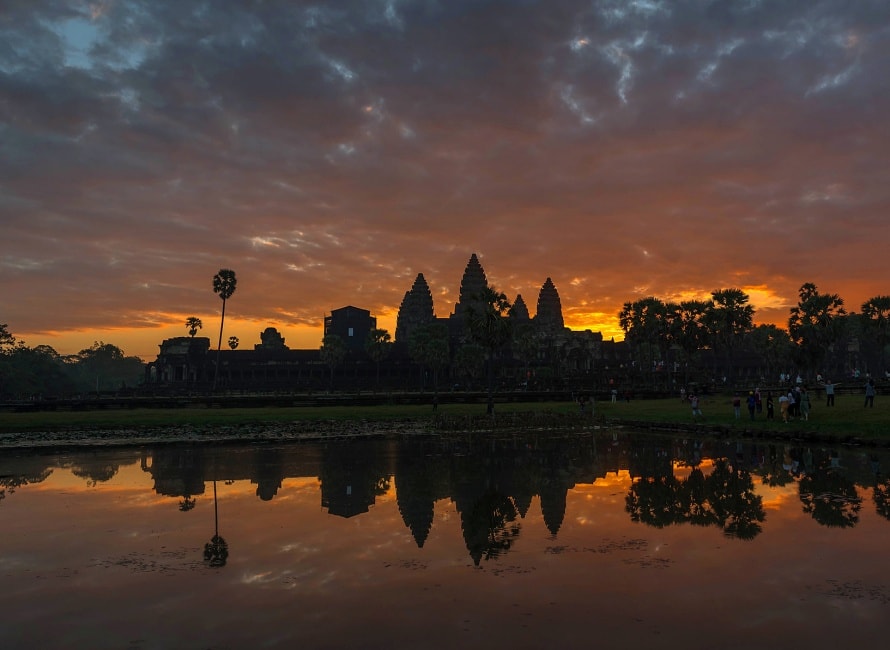
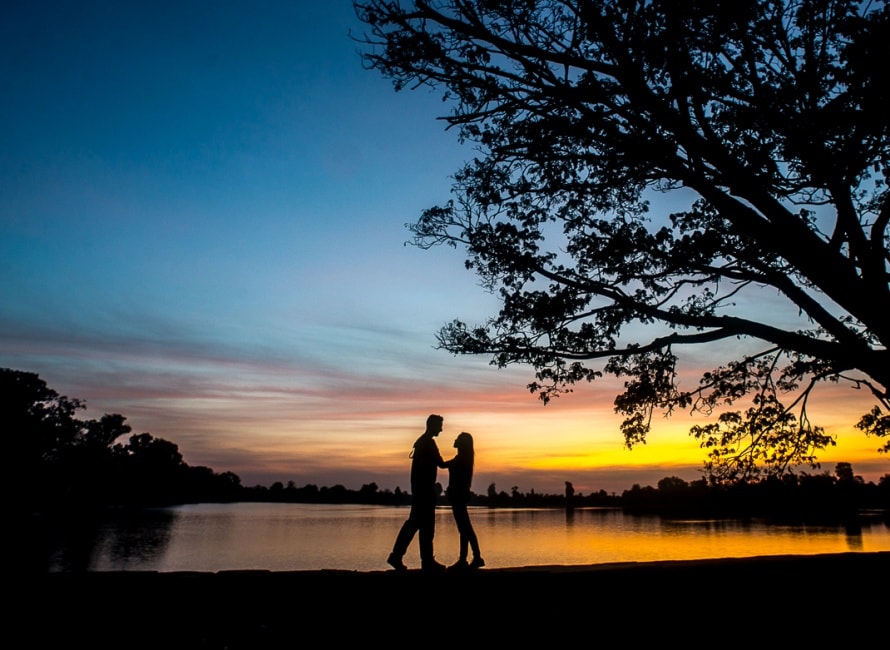
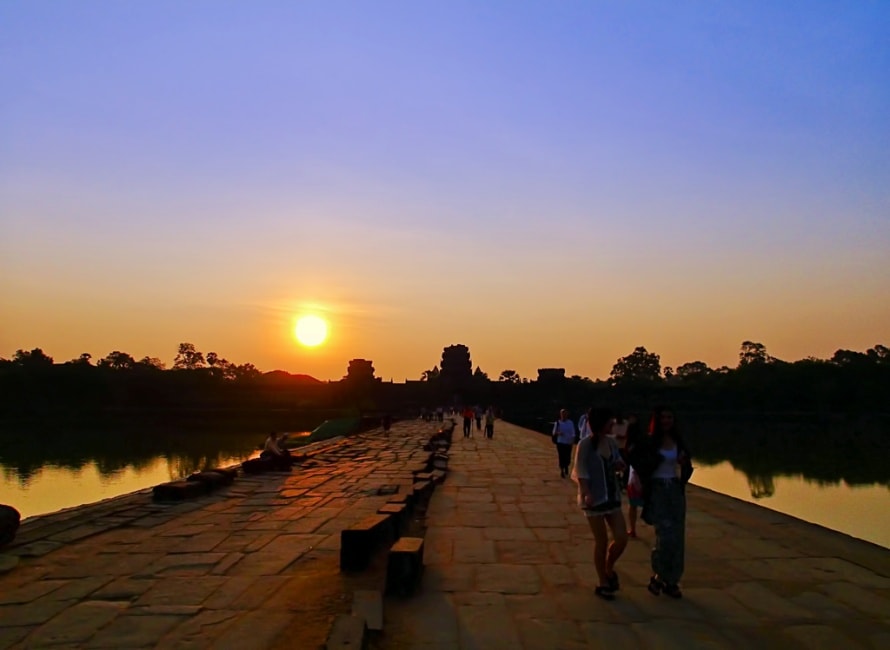
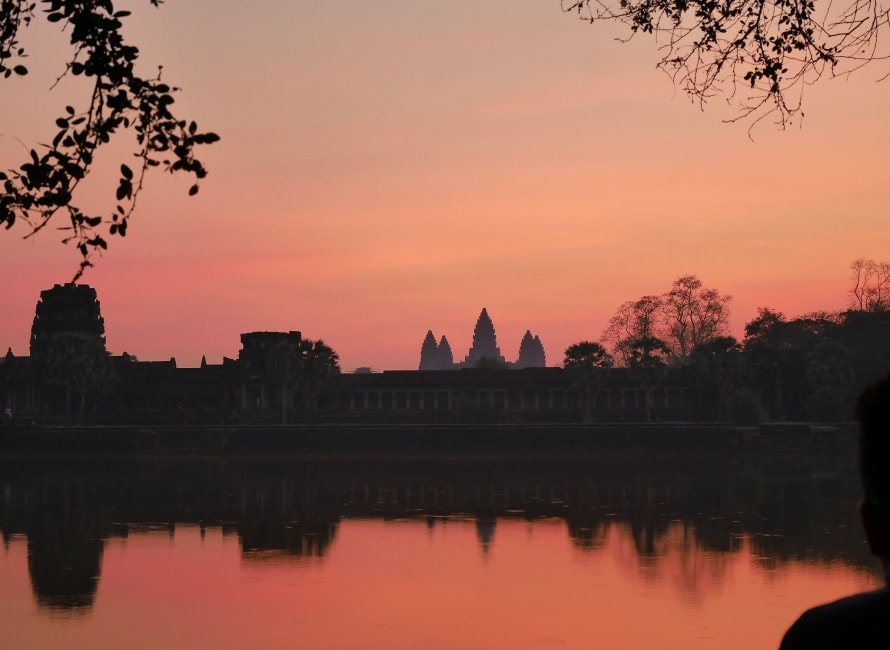
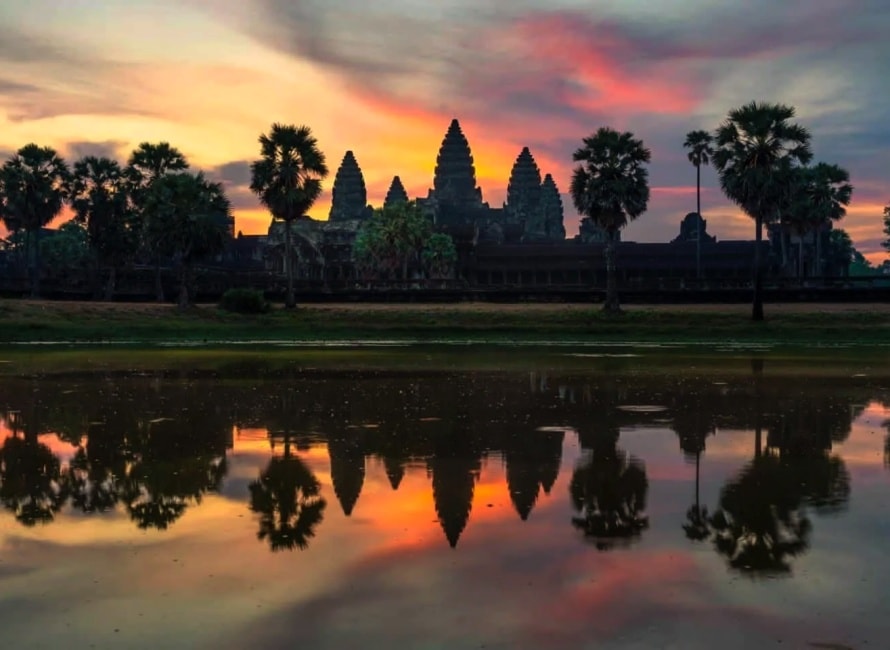
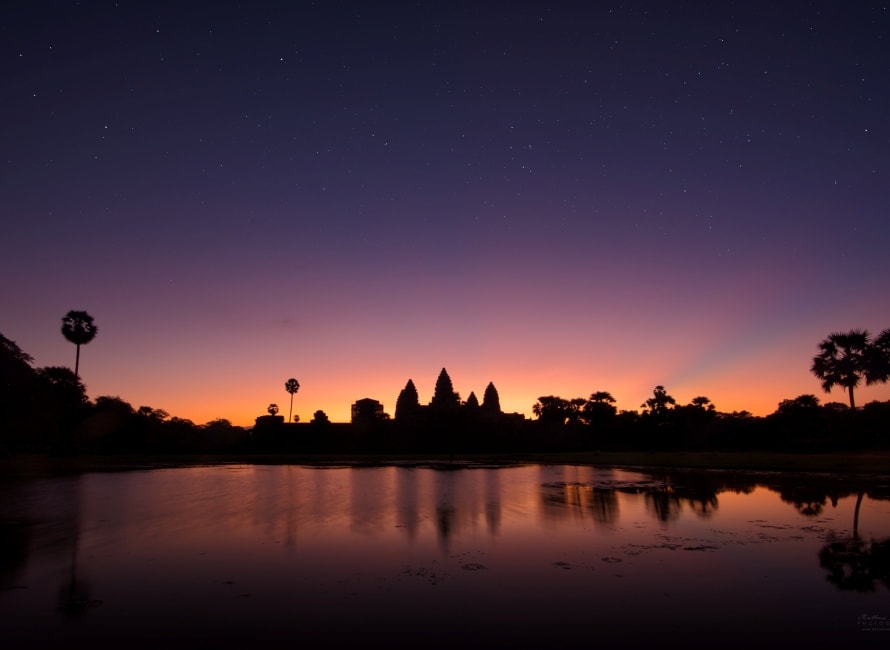
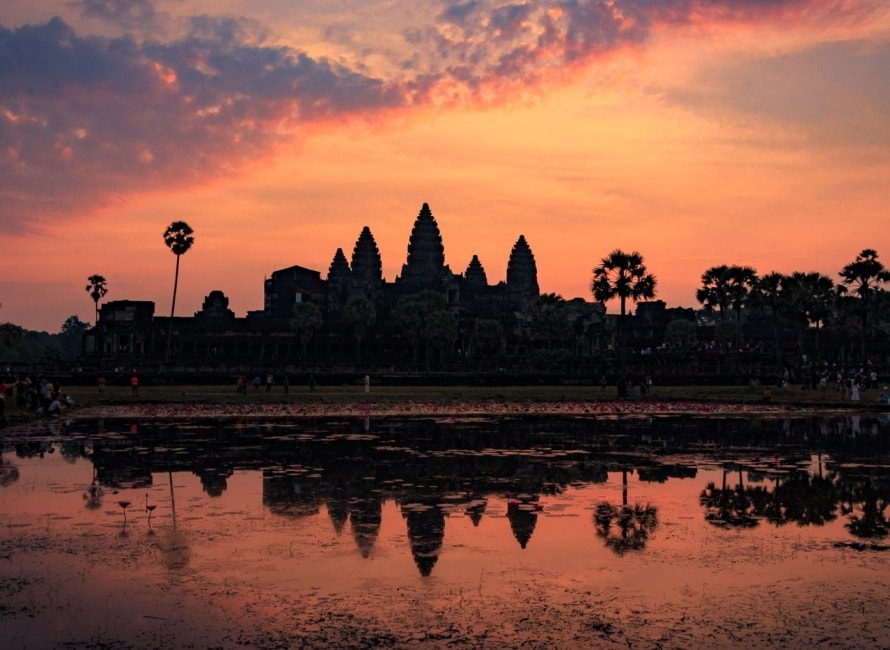
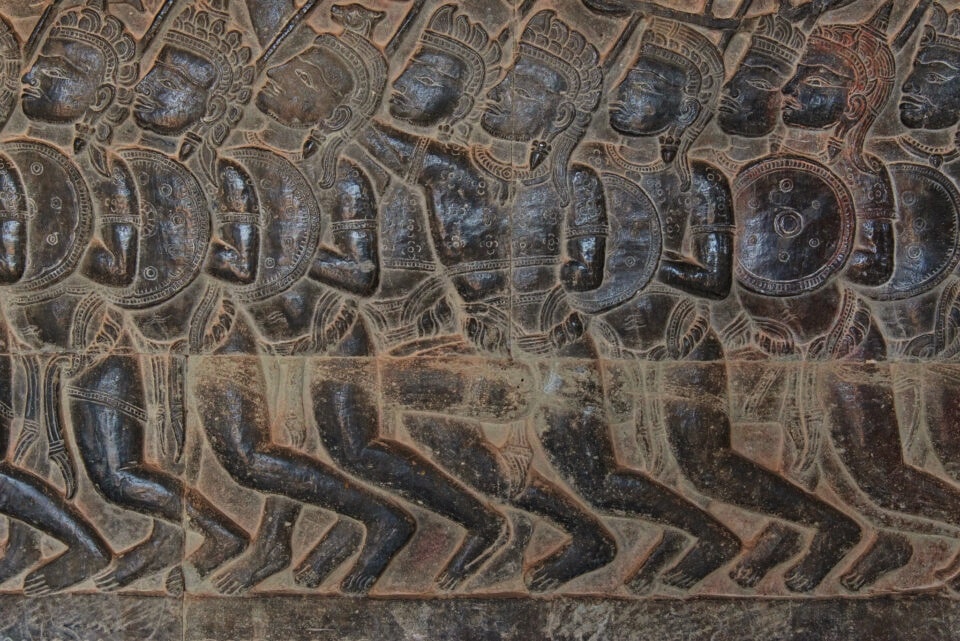
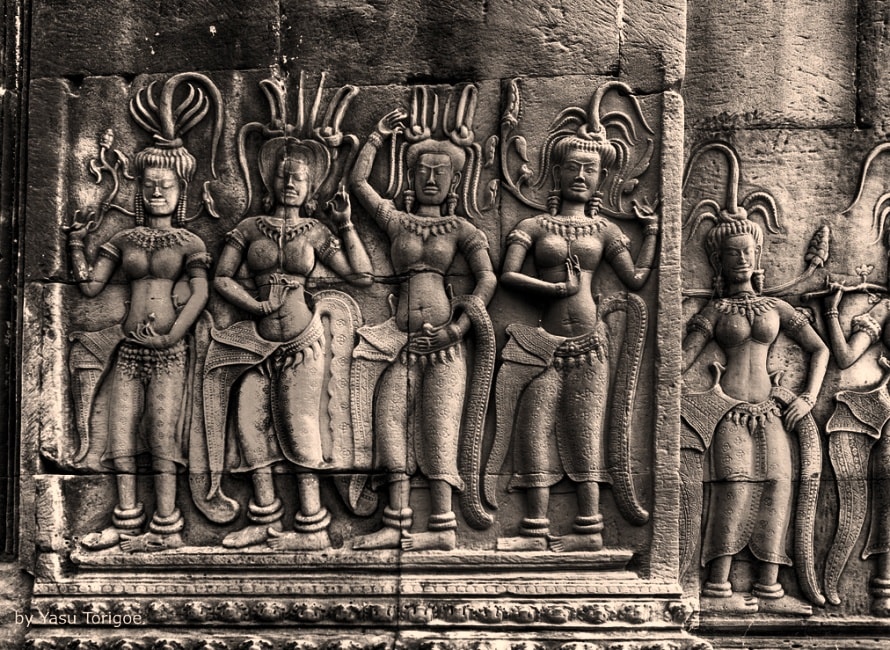
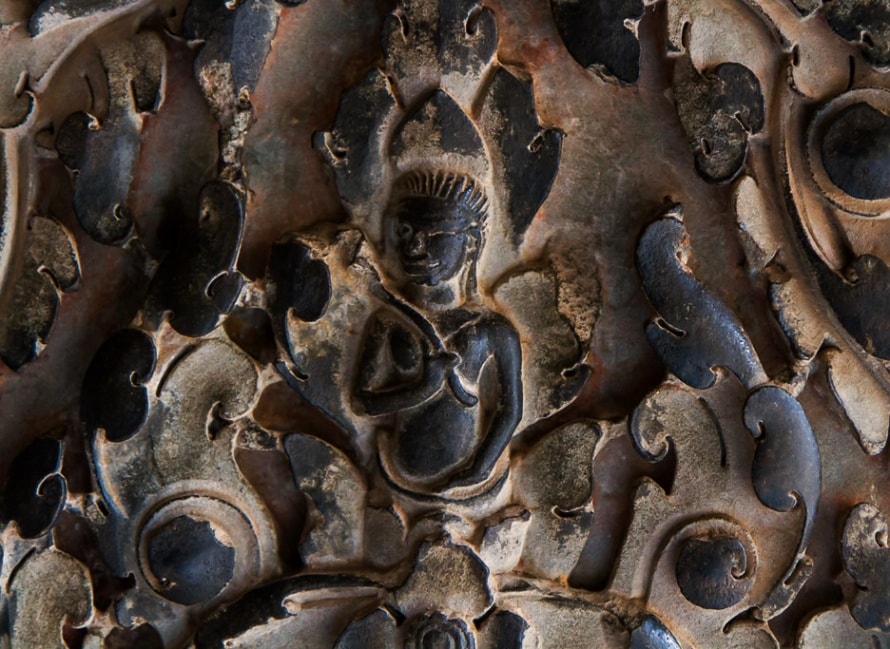
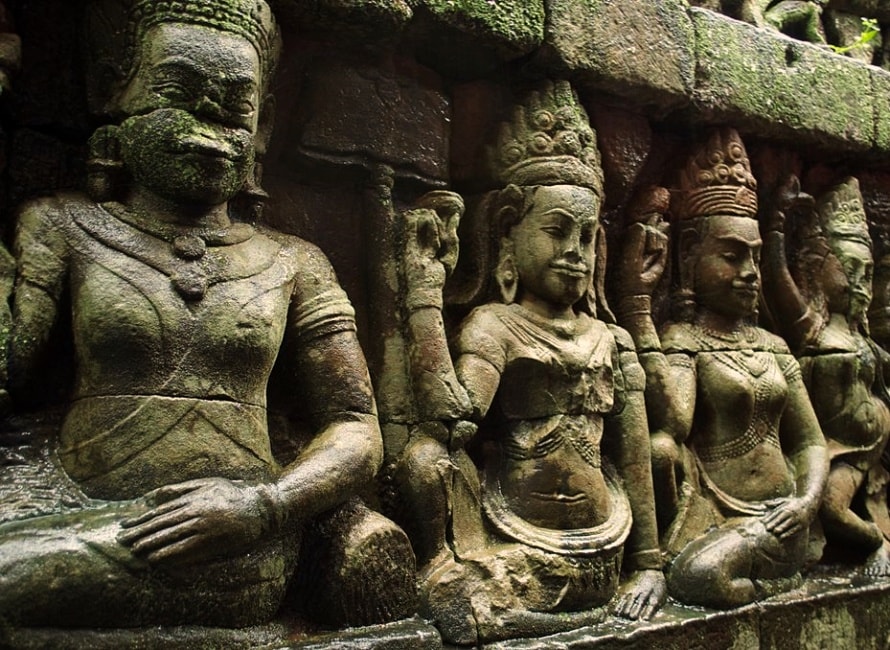
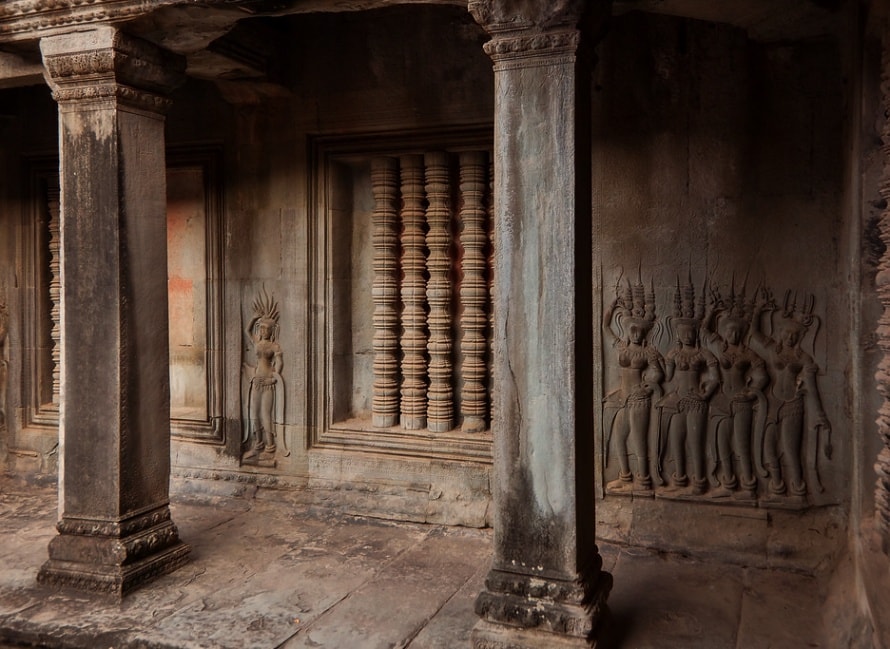
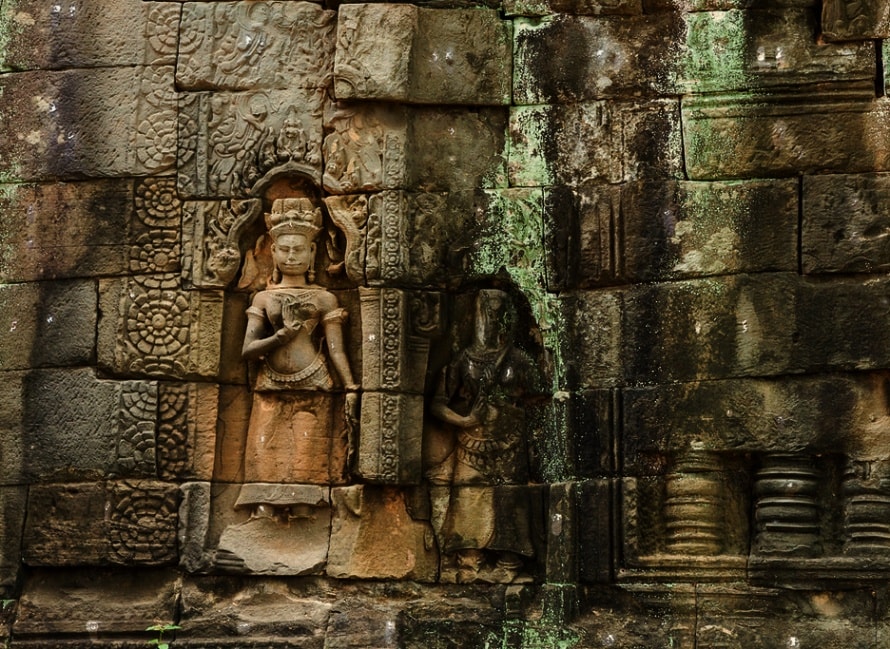
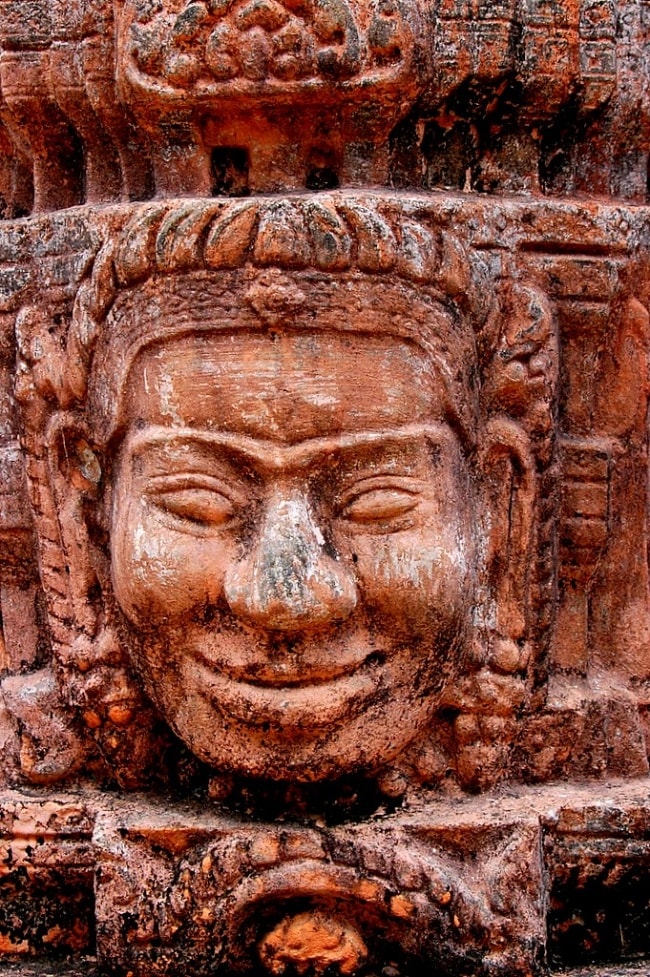
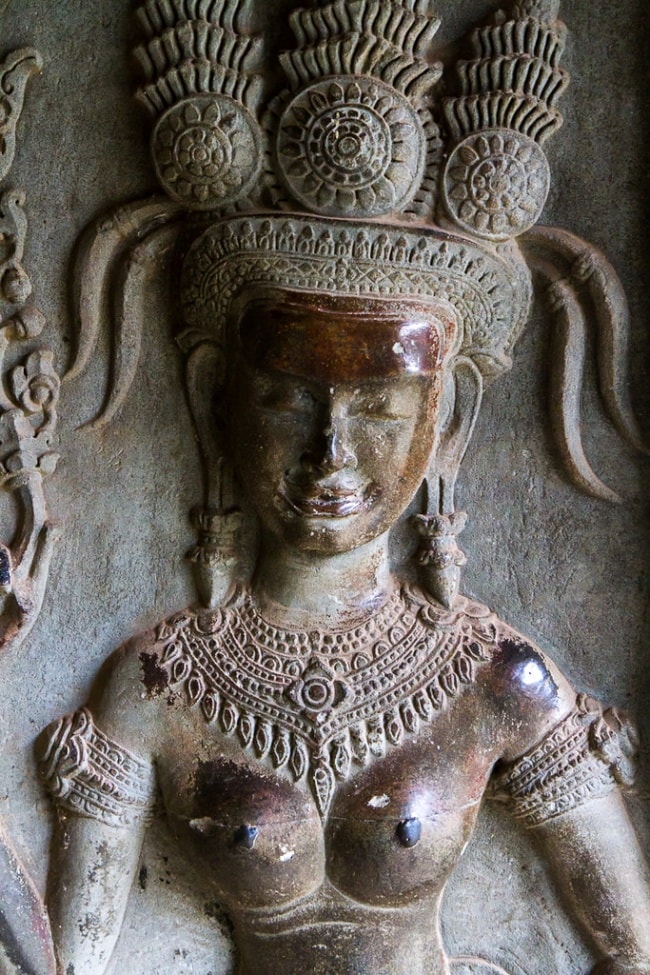

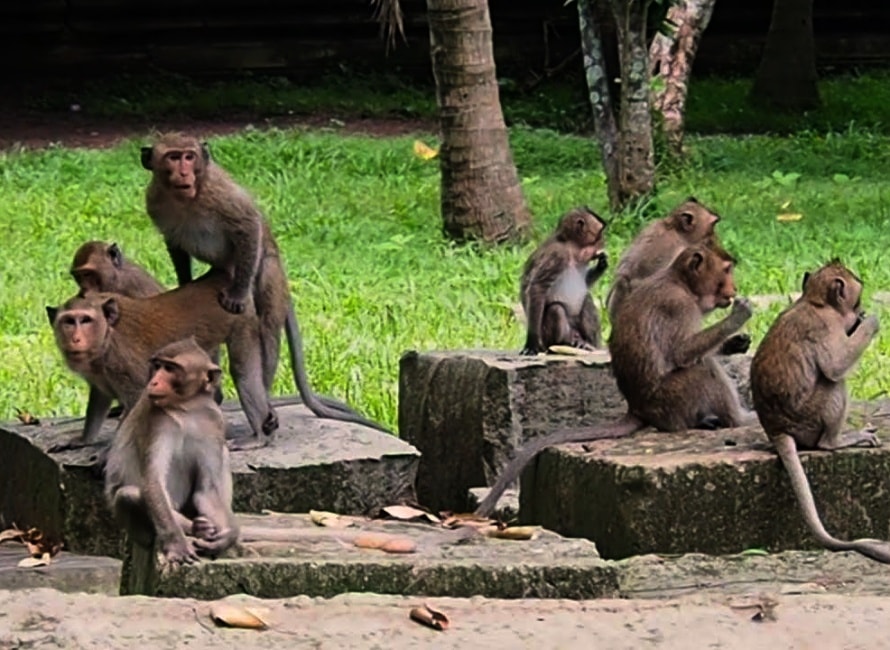
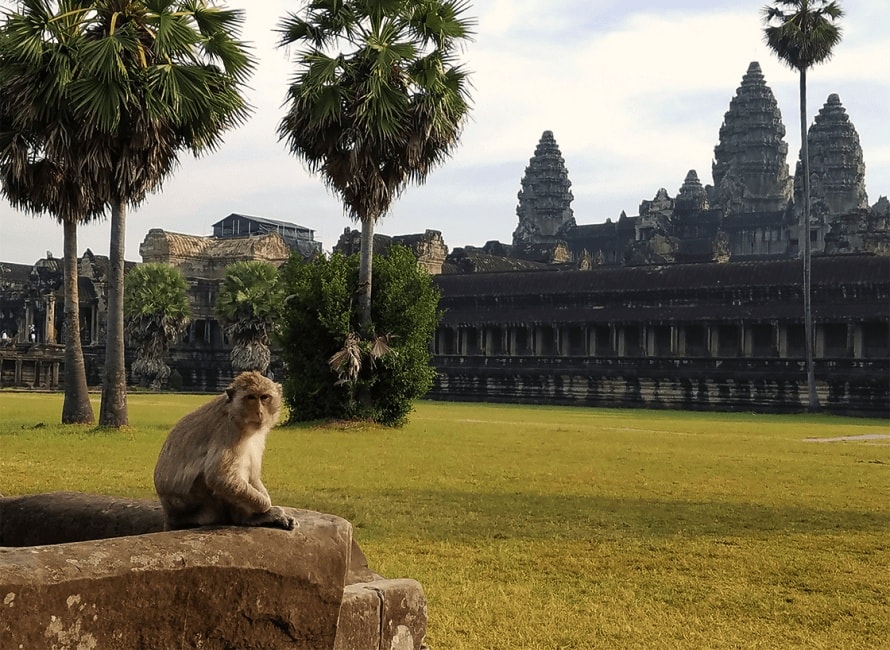
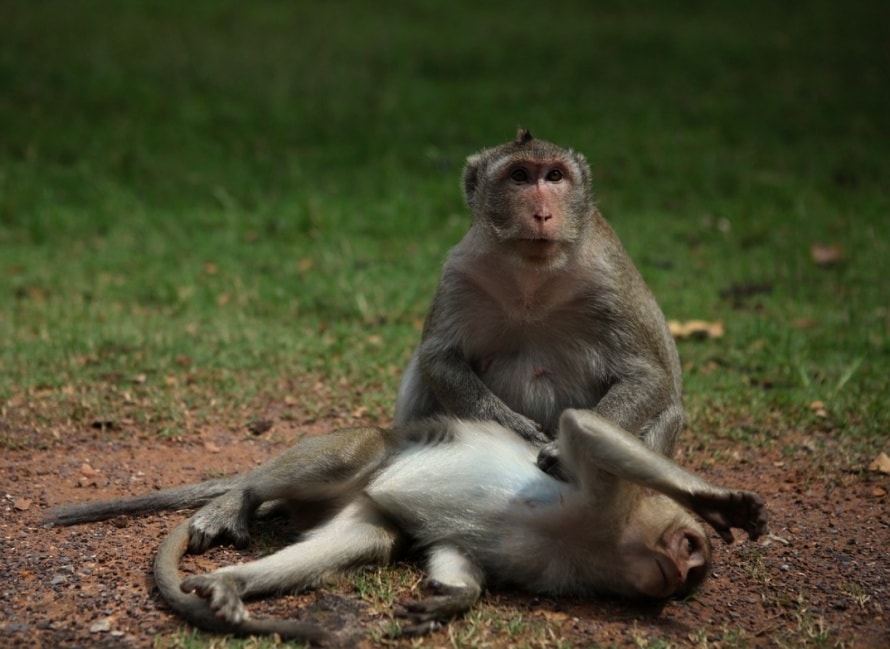
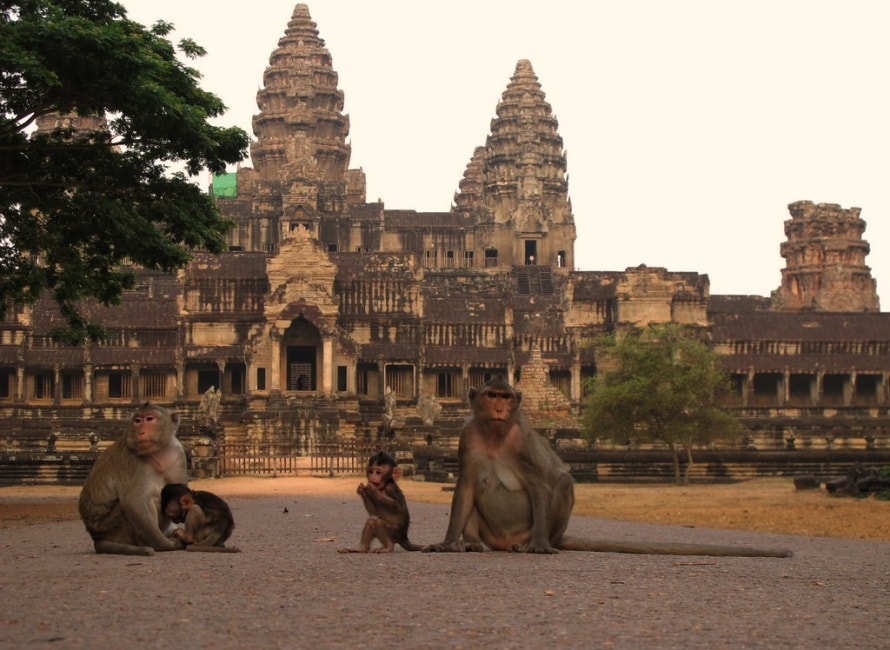
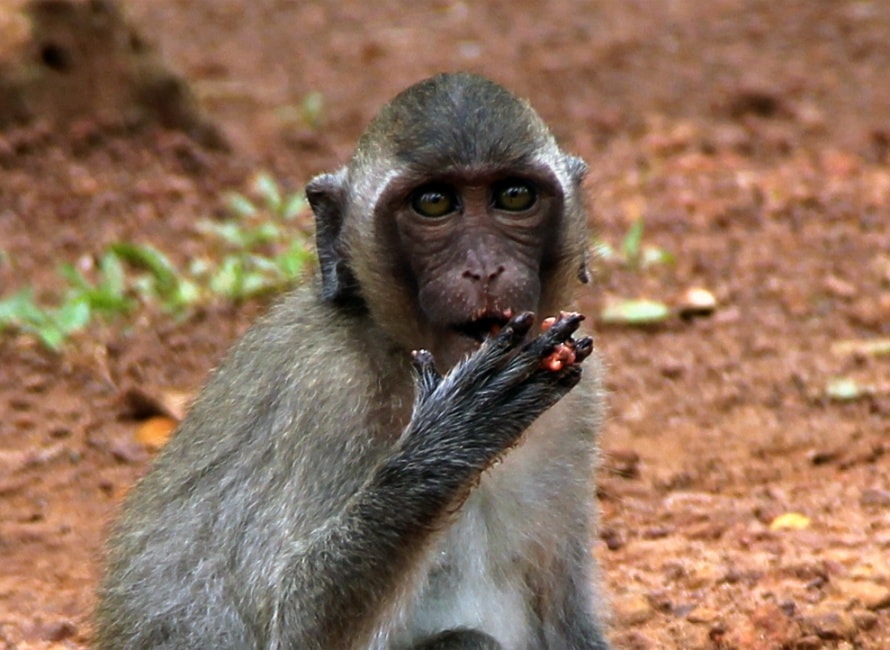
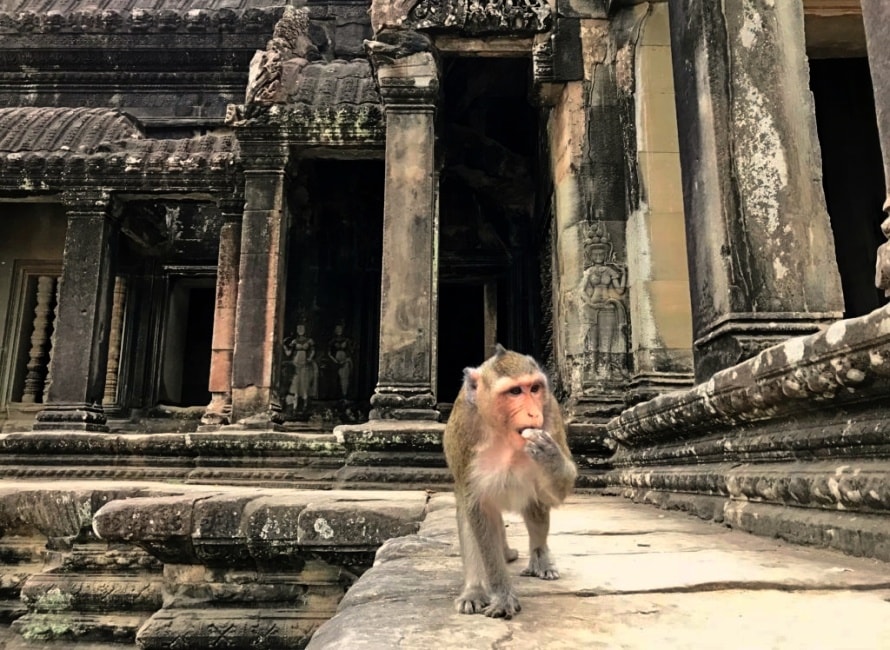
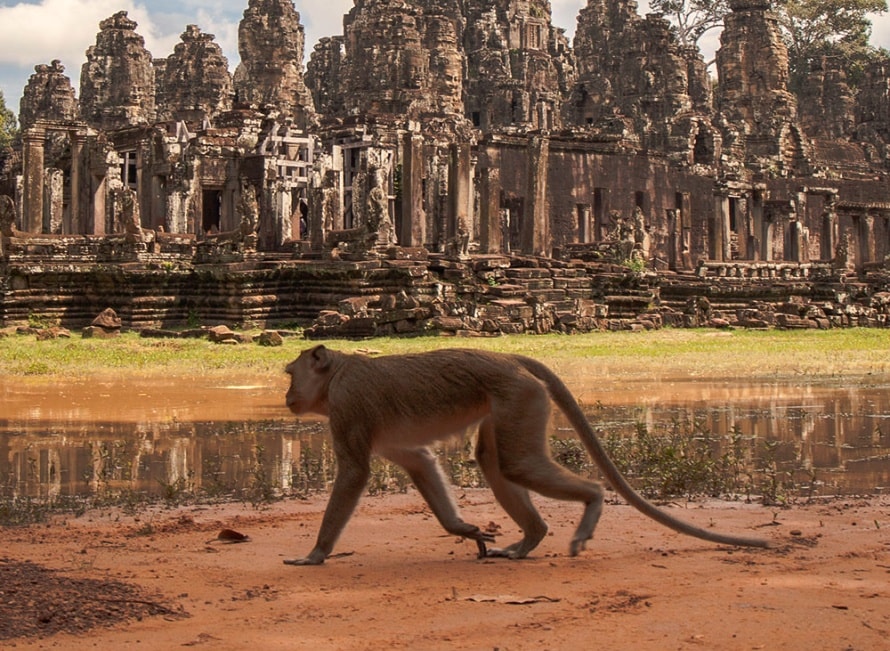
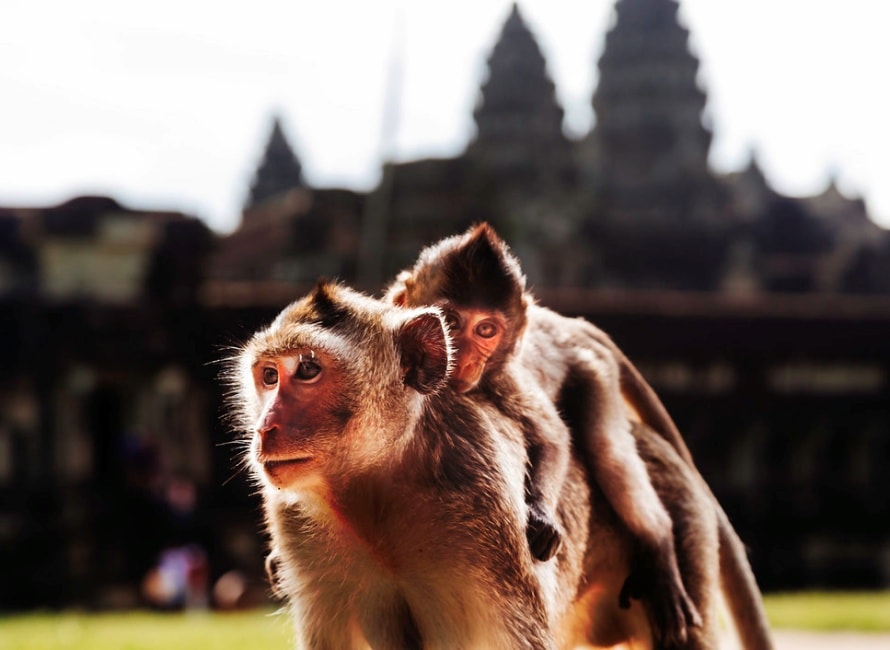
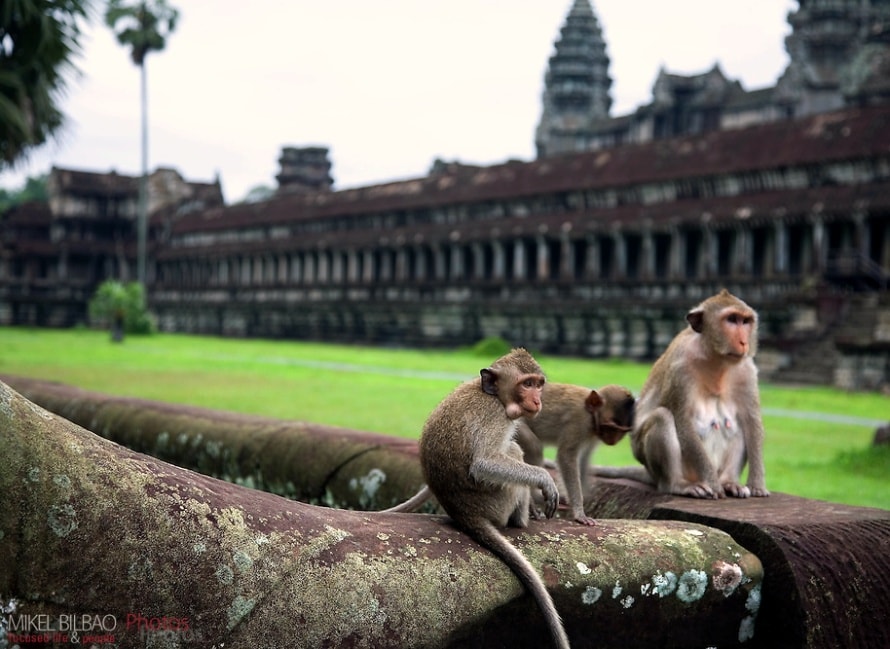
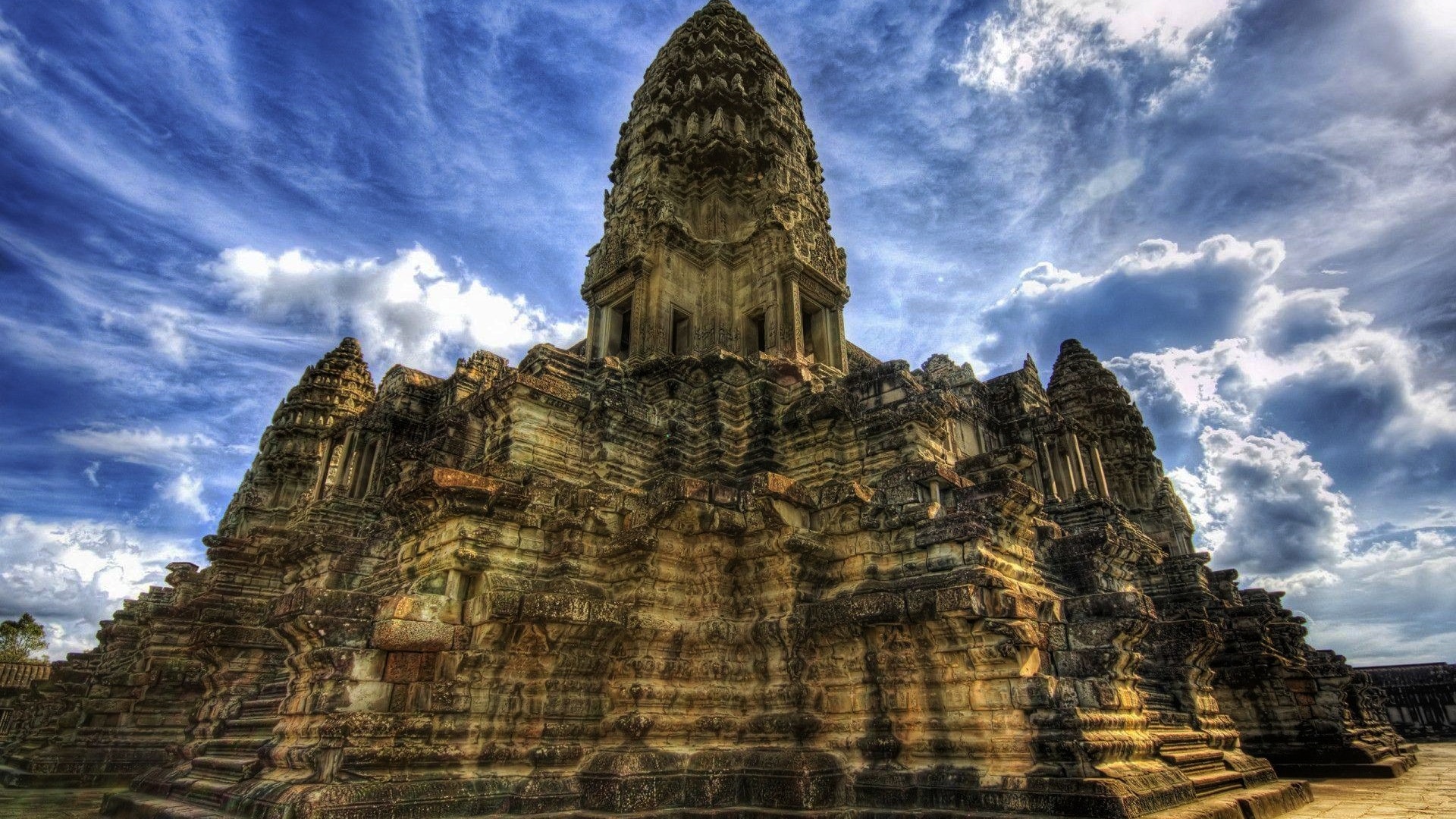
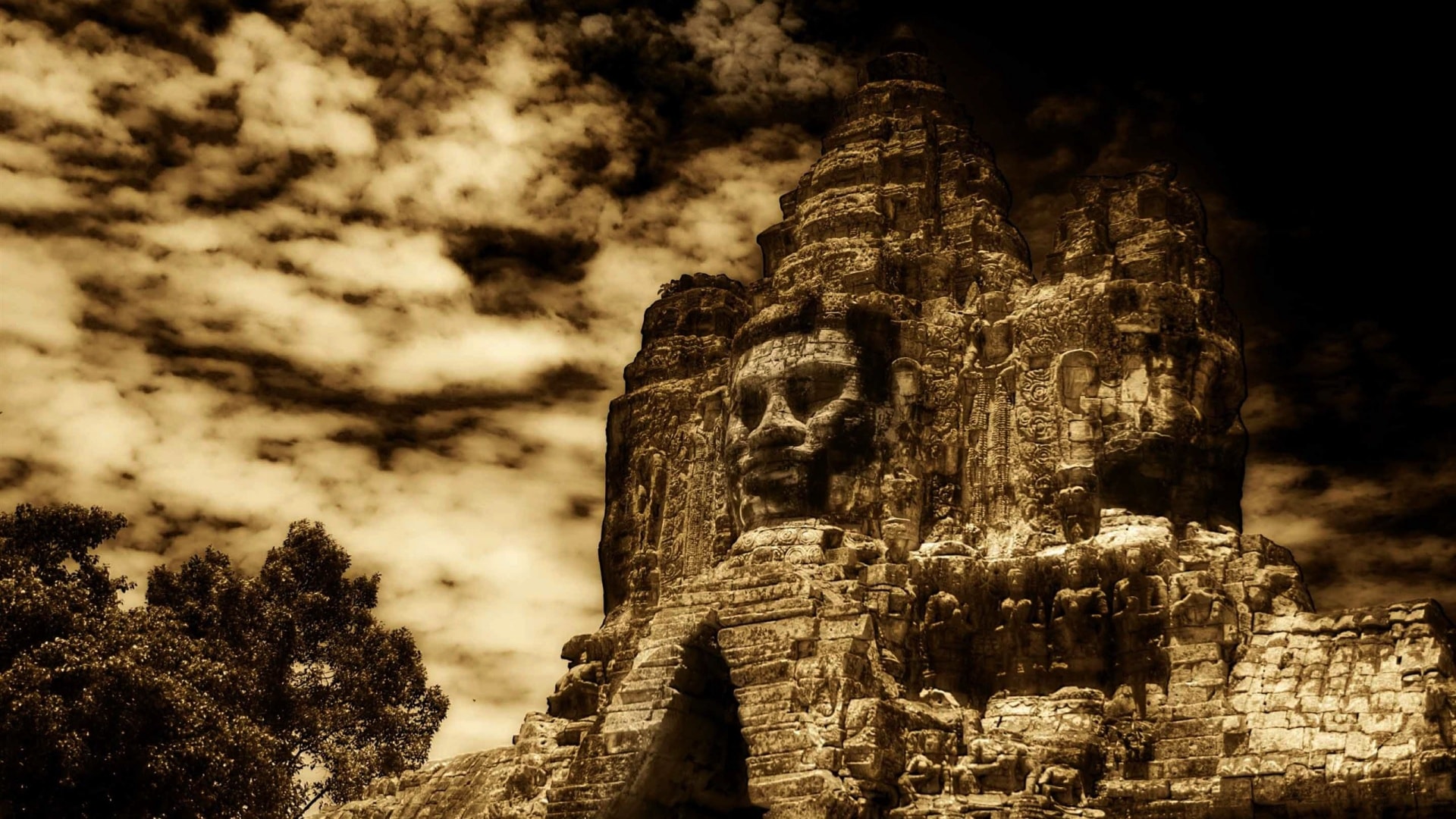

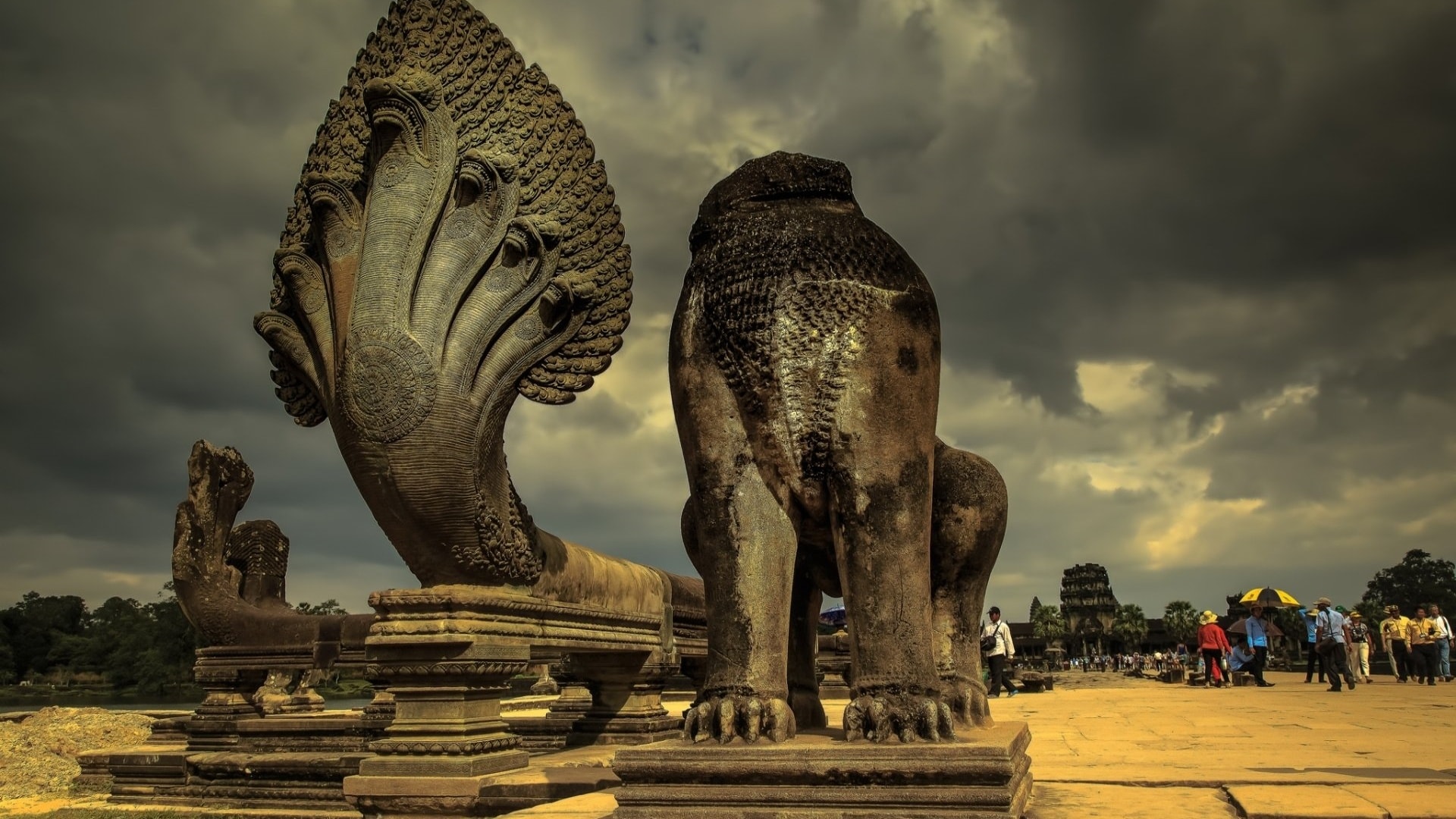
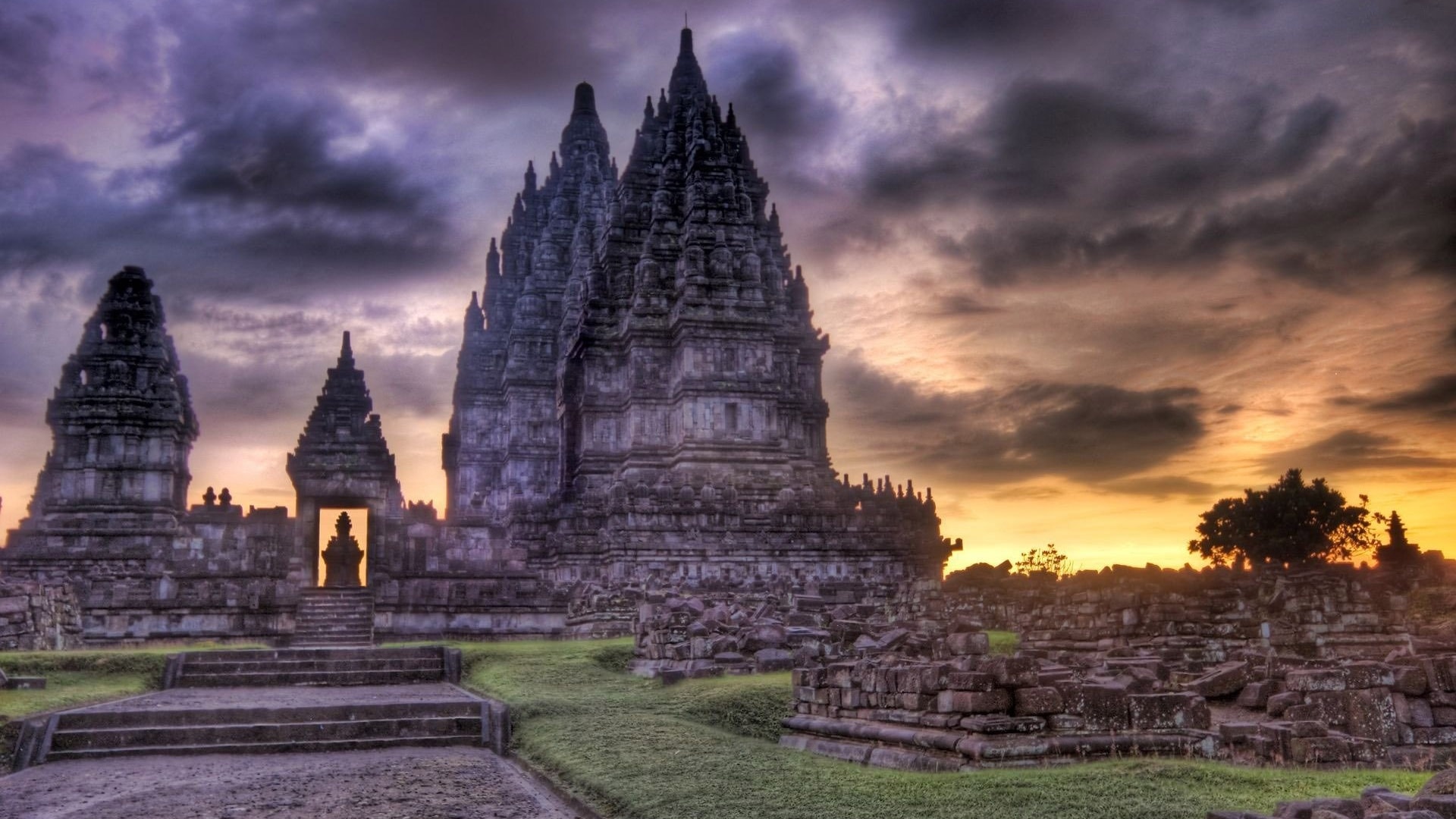

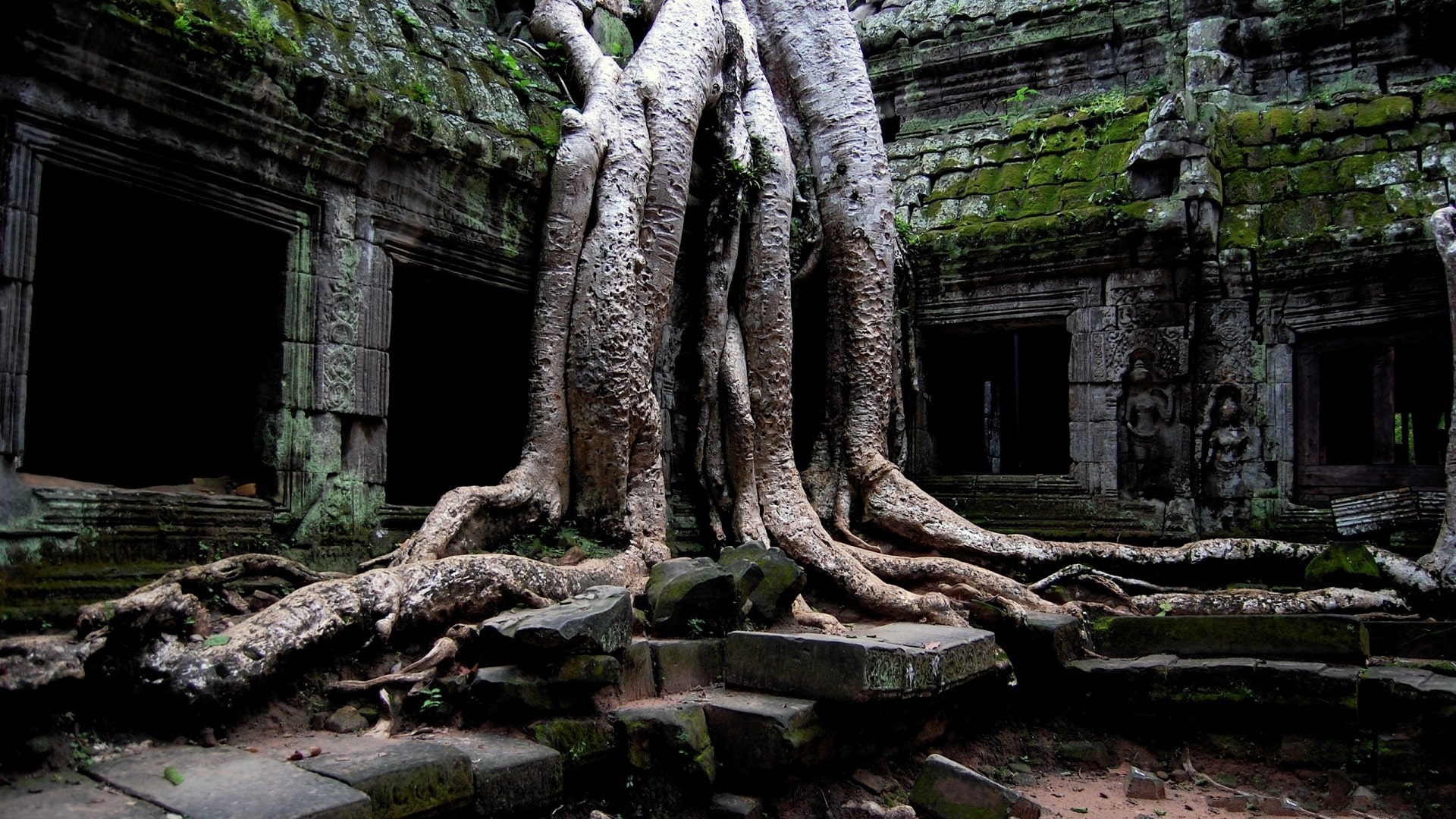
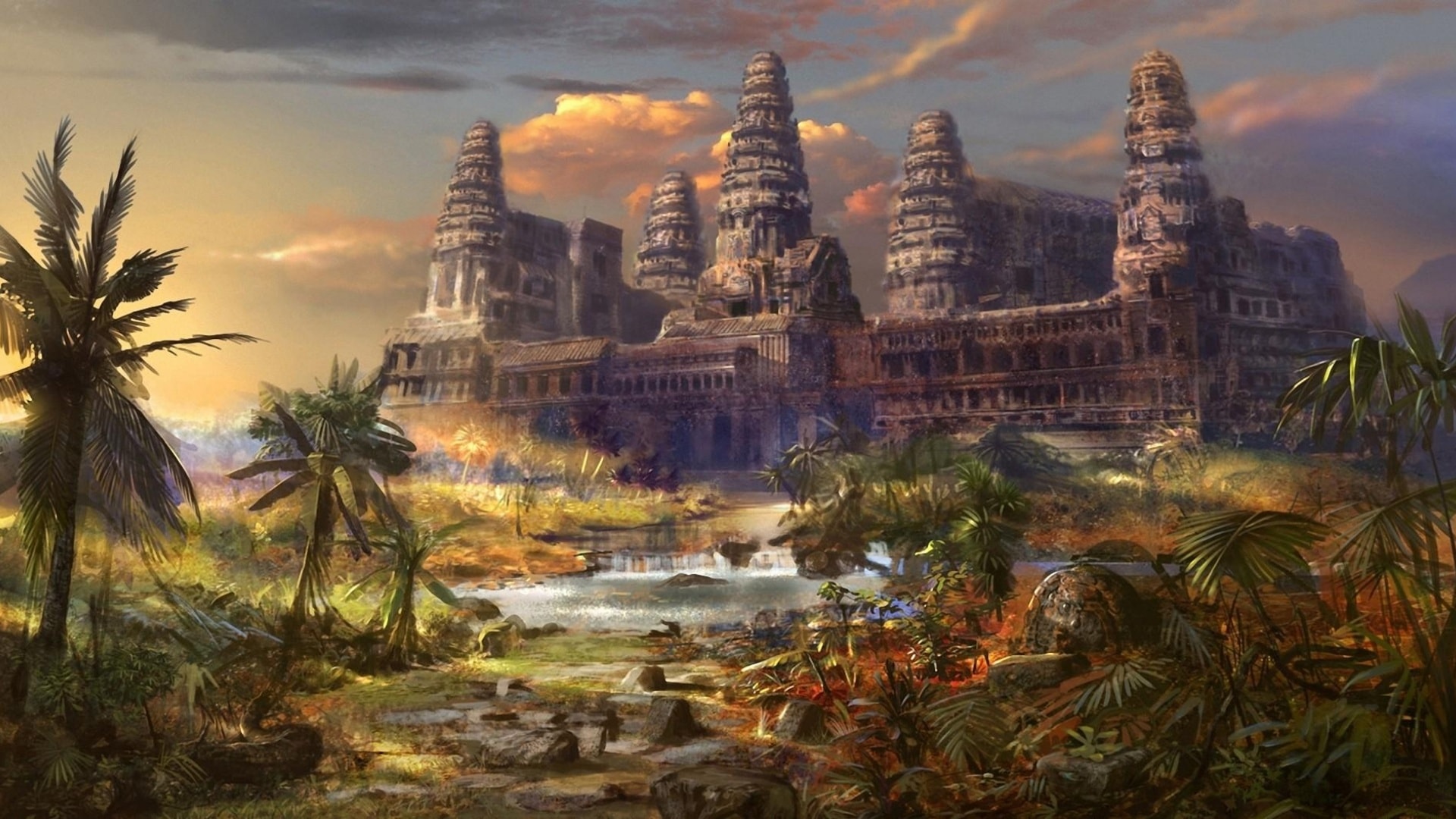
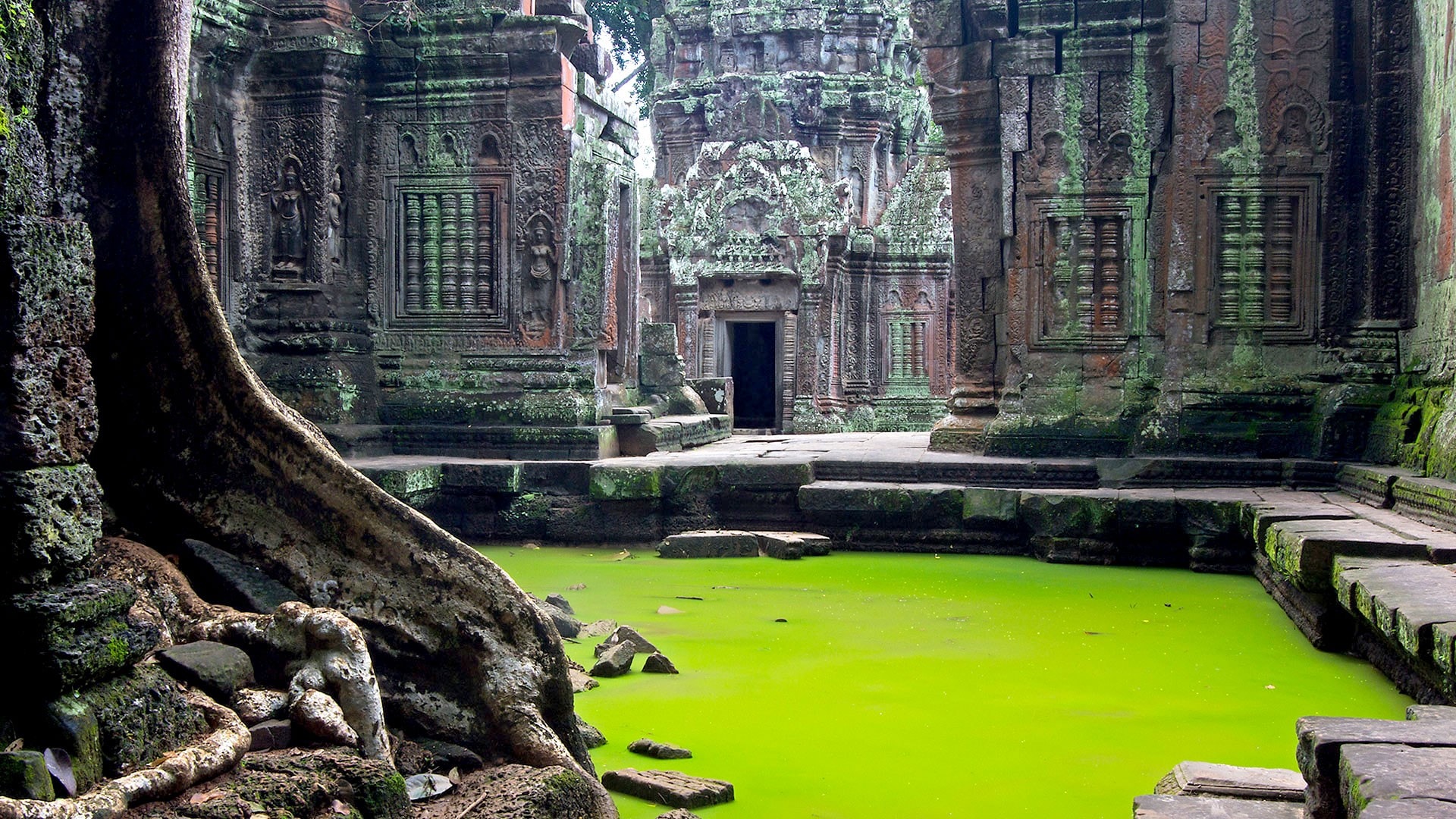
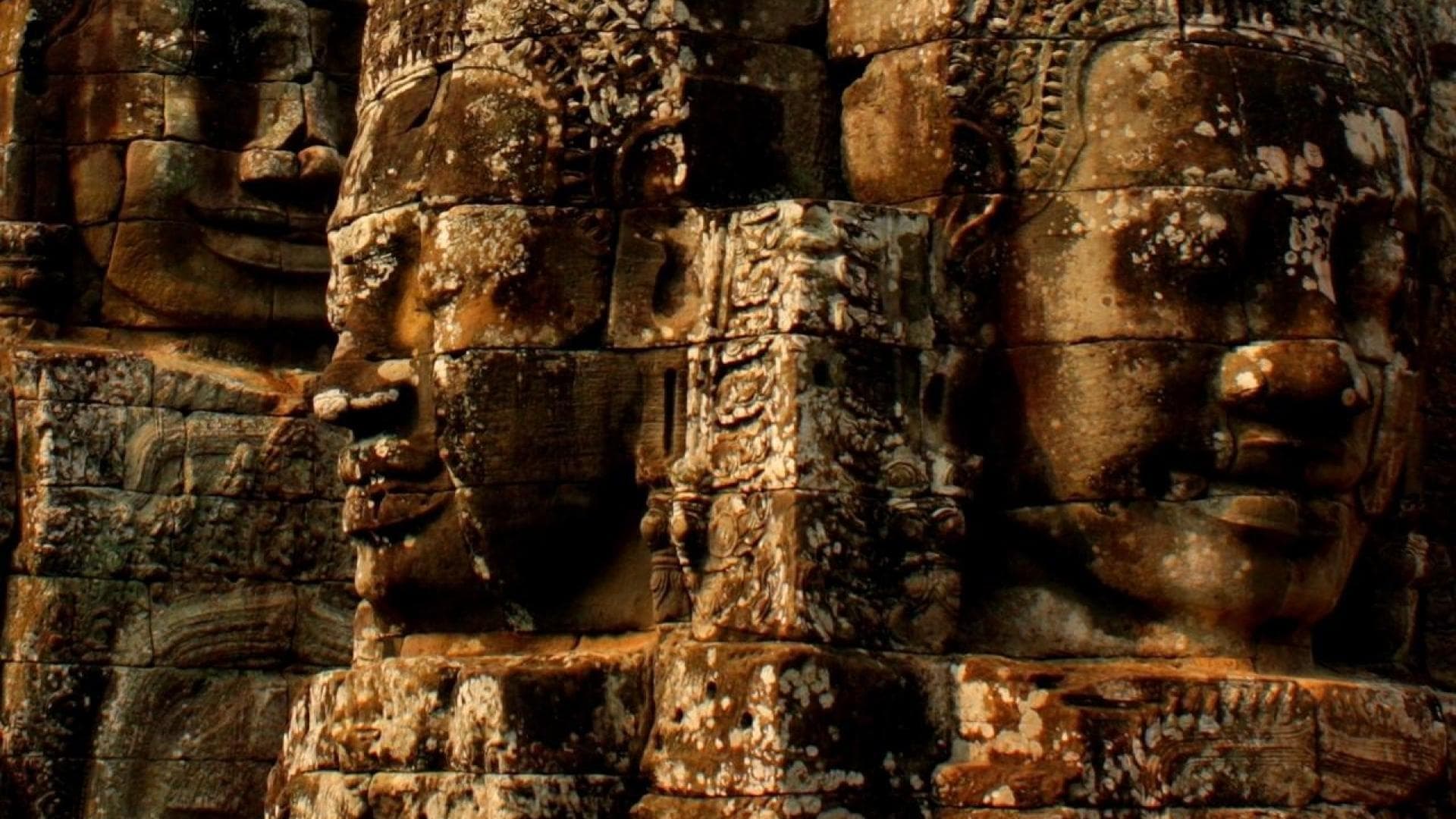
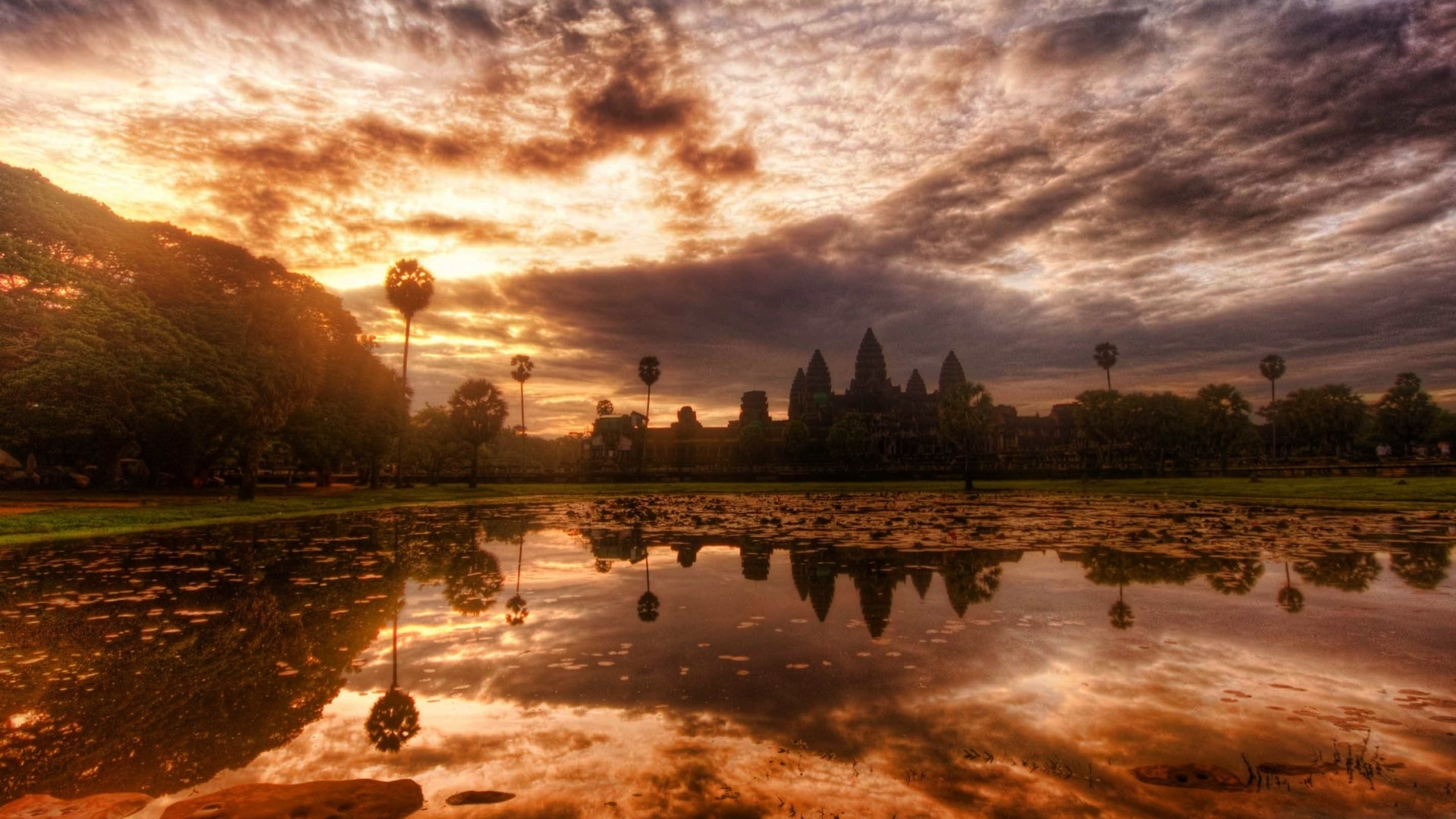

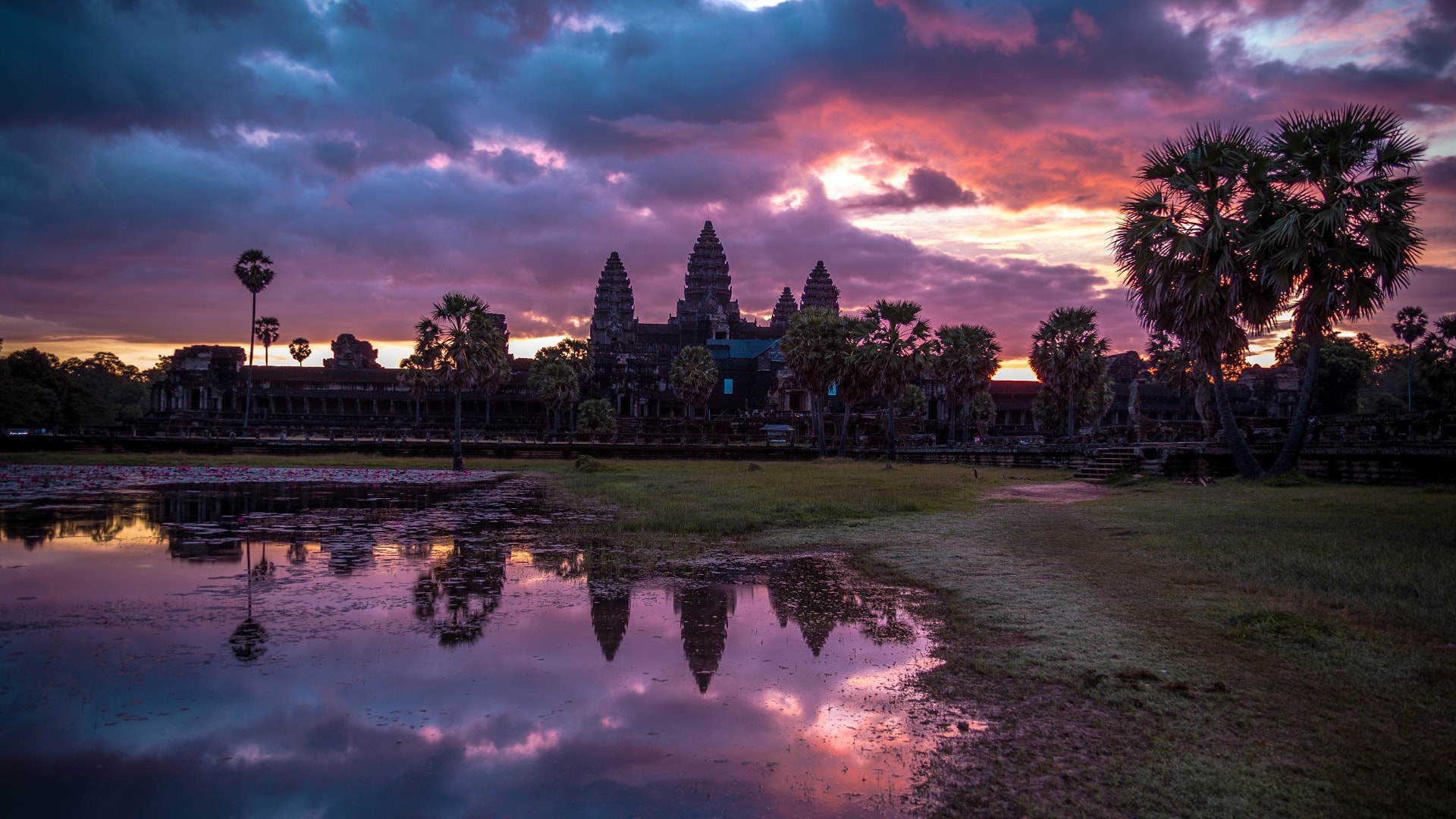
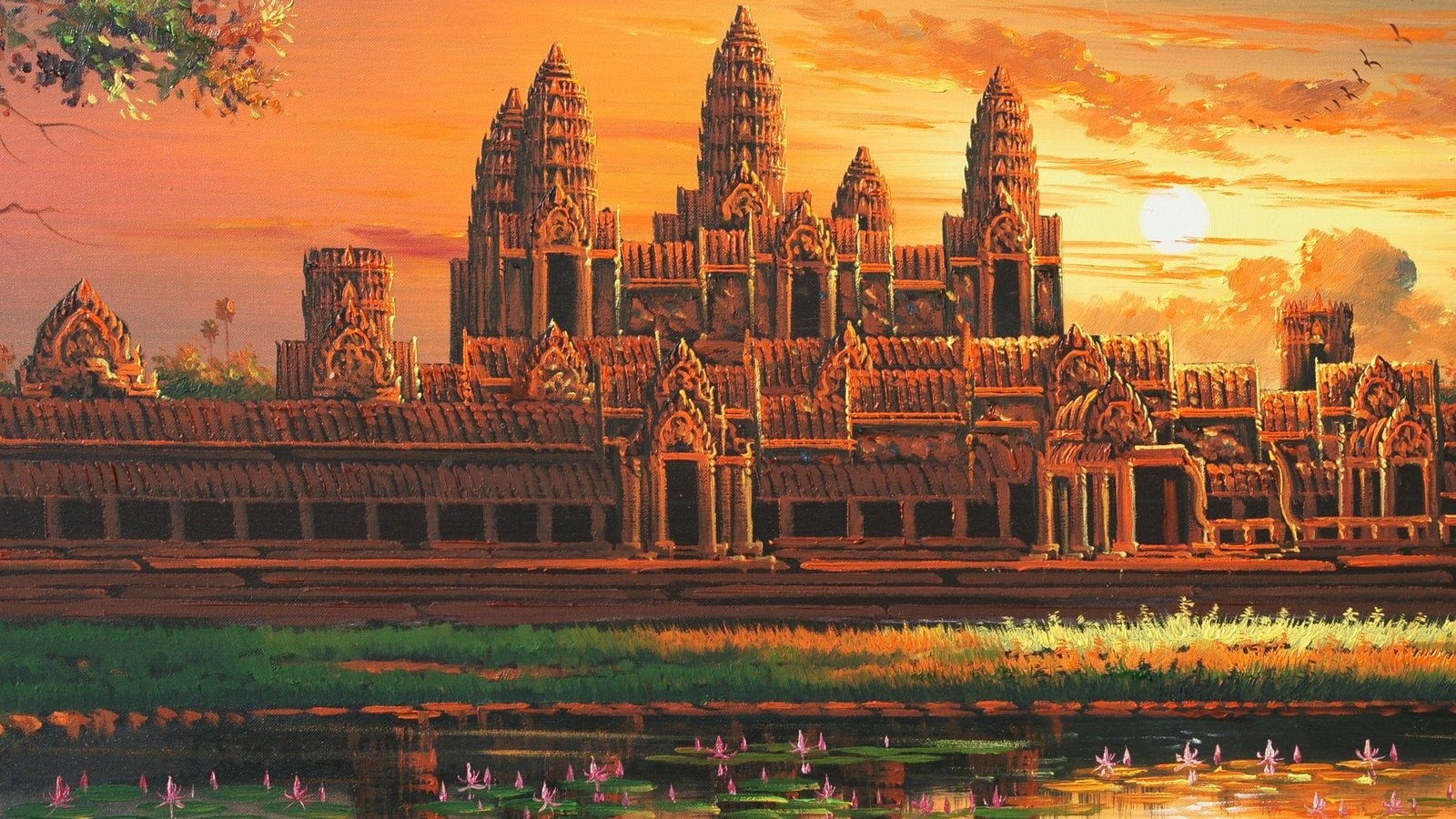

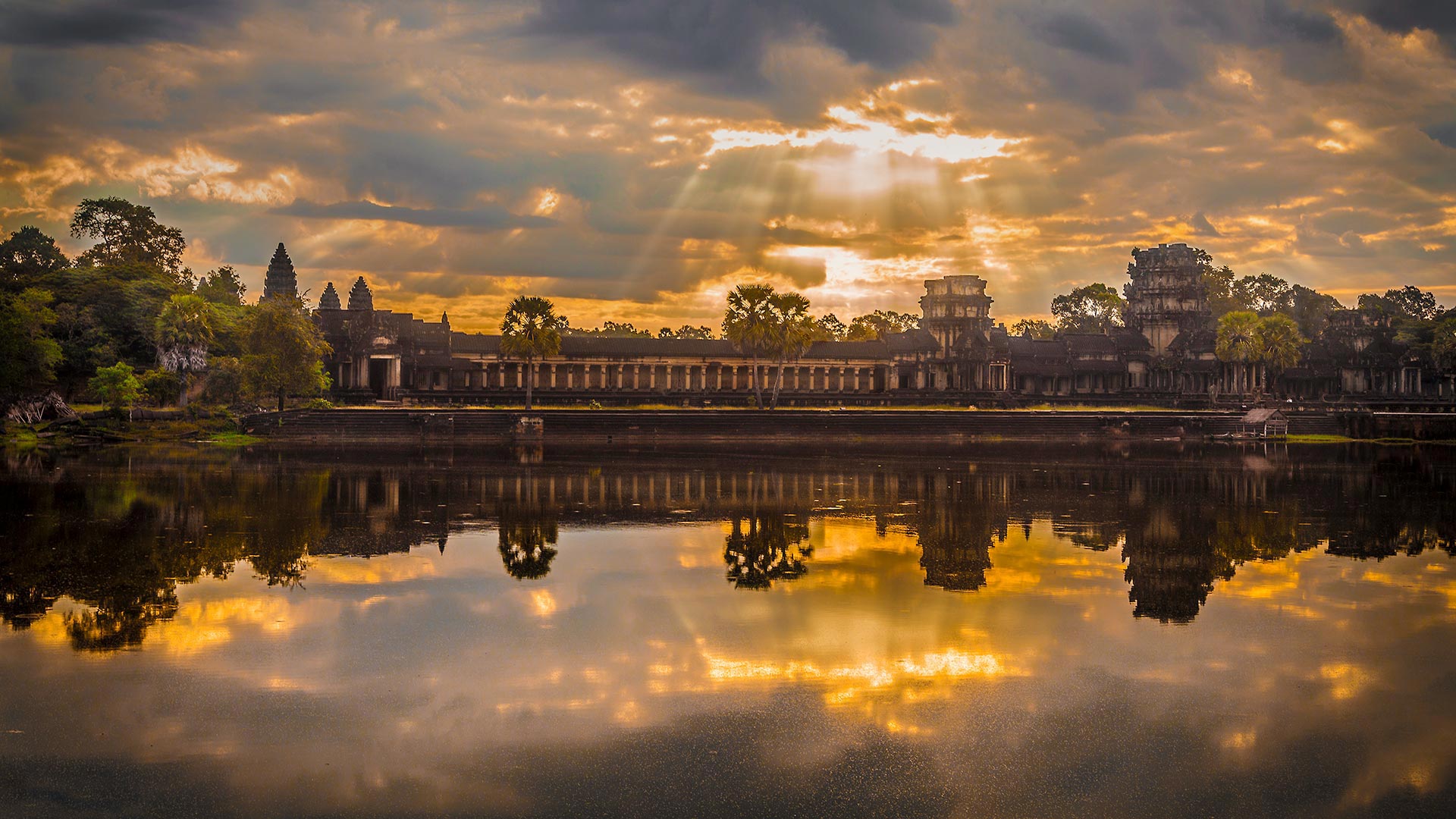




















Jolie LIEMMy name is Jolie, I am a Vietnamese girl growing up in the countryside of Hai Duong, northern Vietnam. Since a little girl, I was always dreaming of exploring the far-away lands, the unseen beauty spots of the world. My dream has been growing bigger and bigger day after day, and I do not miss a chance to make it real. After graduating from the univesity of language in Hanoi, I started the exploration with a travel agency and learning more about travel, especially responsible travel. I love experiencing the different cultures of the different lands and sharing my dream with the whole world. Hope that you love it too!